15 Long Blooming Perennials That Will Fill Your Garden with Flowers
With careful planting, your garden can be filled with low-maintenance and long-lasting showy blooms. These long blooming perennials will ensure you'll have an impressive display of flowers from the beginning to the end of the summer.

While the spring blossoms of lilacs or the showy bunches of peonies are lovely, it’s always sad to see them go.
Luckily, there are plenty of other flowers that keep on blooming for months on end.
Adding perennials that bloom all summer to your garden will ensure there are always some bright and cheery petals to look forward to.
This list of long-blooming perennials will take you from the beginning of the gardening season all the way to the end. So you’ll always have a burst of color in your yard to brighten your day.
1 | Giant hyssop
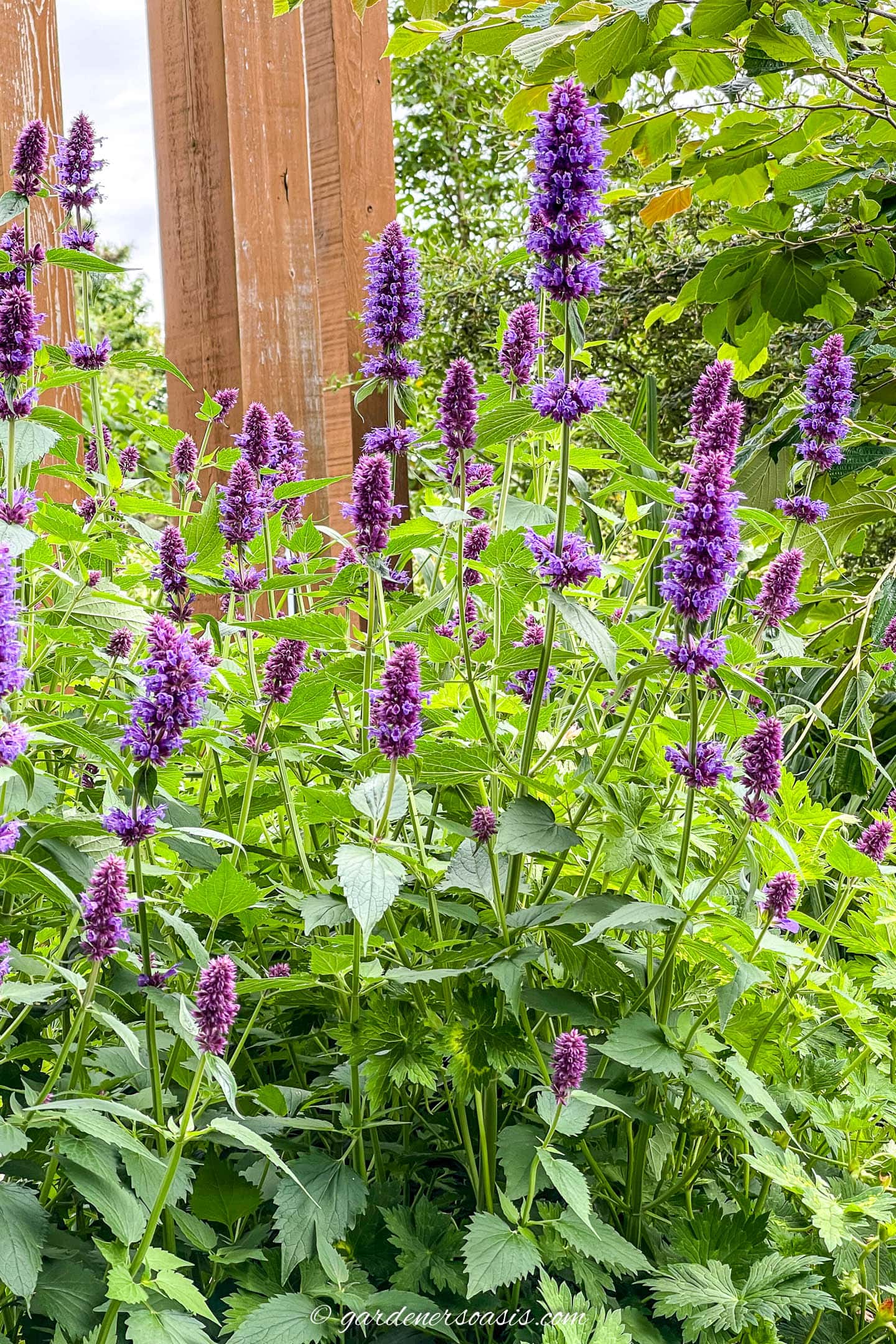
Botanical name: Agastache
Zones: 3 to 10 (depending on the variety)
Sun: Full sun to part shade
Height: 2′ to 6′ (depending on the variety)
Width: 1′ to 3′
Flower color: Purple, blue, white, orange, red
Giant Hyssop is a beautiful back-of-the-border perennial with spiky flowers that last from early summer to early fall.
The most common varieties have purple flowers, but it is available in a number of other shades.
This native plant thrives in hot conditions with dry soil that has not been amended, and is very drought tolerant.
Although it is a member of the mint family, it does not spread aggressively like other mints do. It can self-seed but the seedlings are easy to pull if you don't like where they are growing.
Attracts bees, butterflies and birds.
2 | Black-Eyed Susan
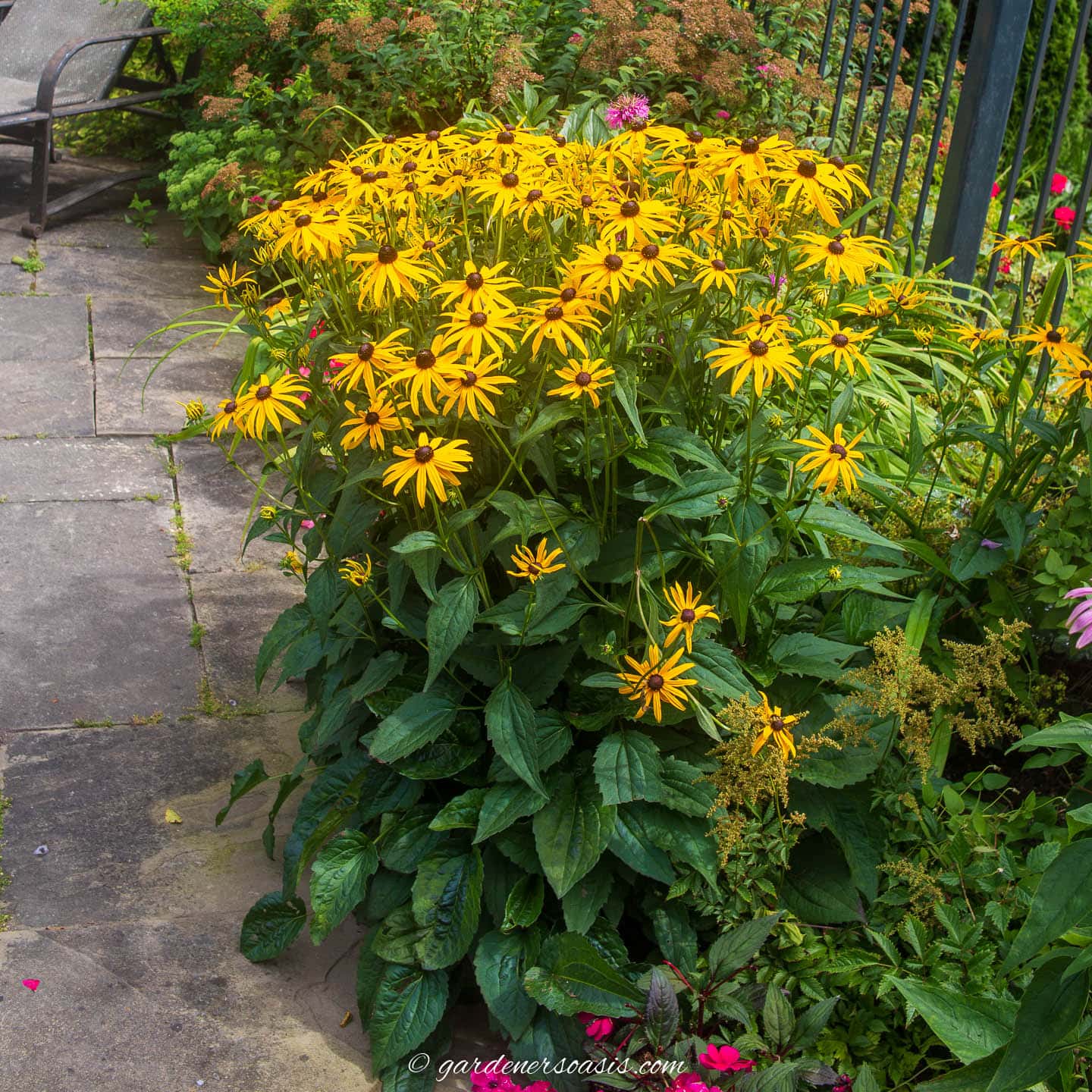
Botanical name: Rudbeckia hirta
Zones: 3 to 7
Sun: Full sun
Height: 1′ to 2′
Width: 3′ to 5′
Flower color: Yellow
Black-eyed Susan’s bright petals, dark centers, and large seed heads pop through the garden, making them a great contender for long-blooming perennials to include this year.
Native to the US, black-eyed Susan plants do well in sunny gardens and handle a lack of water well.
This perennial plant grows best when it has full sunlight all day long so if you're looking for a flower that prefers sunny environments this one's perfect!
3 | Reblooming Daylily
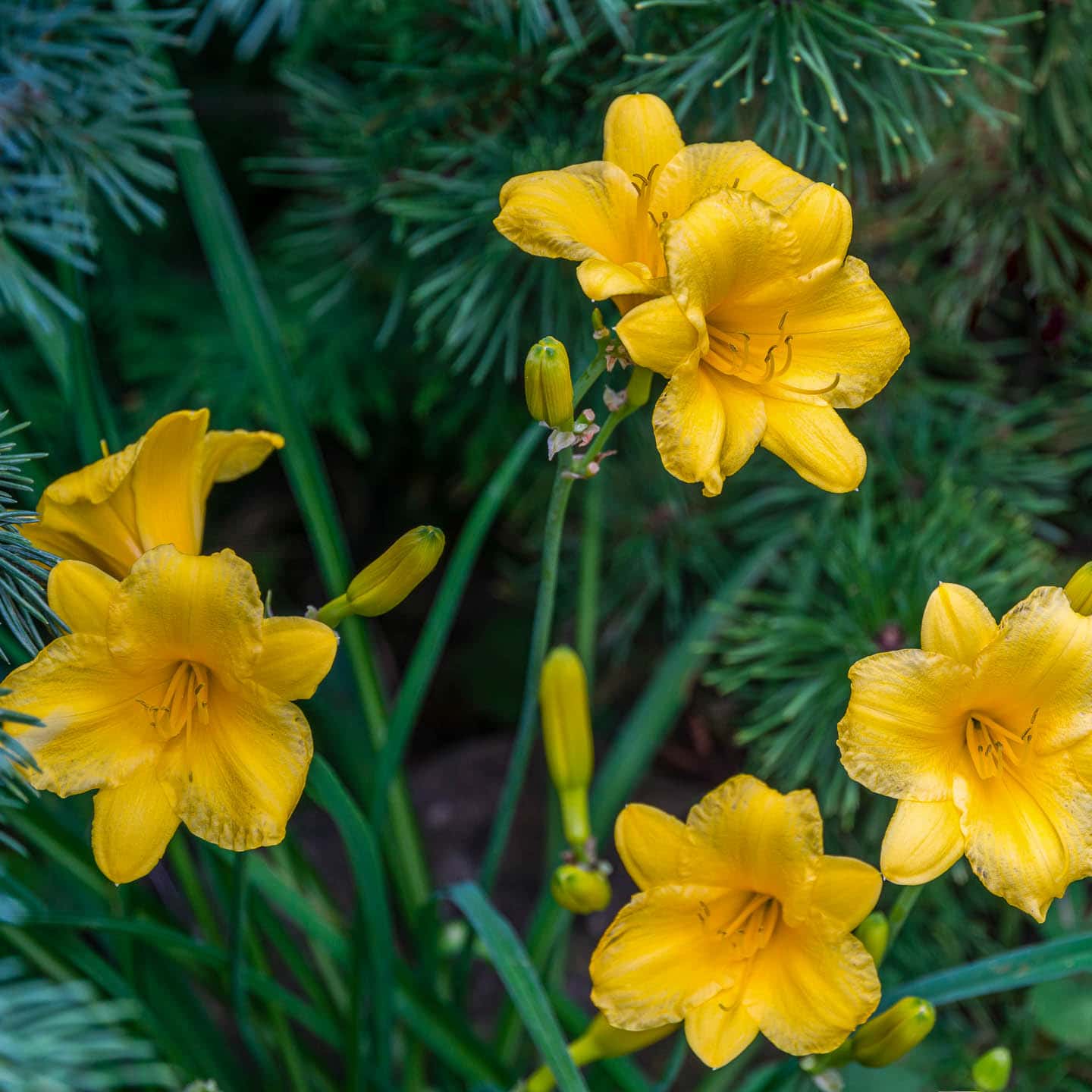
Botanical name: Hemerocallis
Zones: 3 to 10
Sun: Full sun to partial shade
Height: 18″ to 24″
Width: 24″ to 36″
Flower color: Yellow, red, orange, purple, and pink
Reblooming Daylilies are fairly hardy and great for beginners.
If you're looking for long blooming perennials, don't confuse the re-blooming varieties with regular day lilies. (They're equally pretty but won't last nearly as long.)
Daylilies mix well in most gardens and require little maintenance, adapting to the soil they’re planted in.
They prefer full sun but will also tolerate partial shade. To keep them happy and healthy, divide them every 3-4 years.
Most will recognize the Stella D’Oro reblooming daylily and its golden-yellow blooms. But there are varieties available in different colors if you prefer something else.
4 | Echinacea
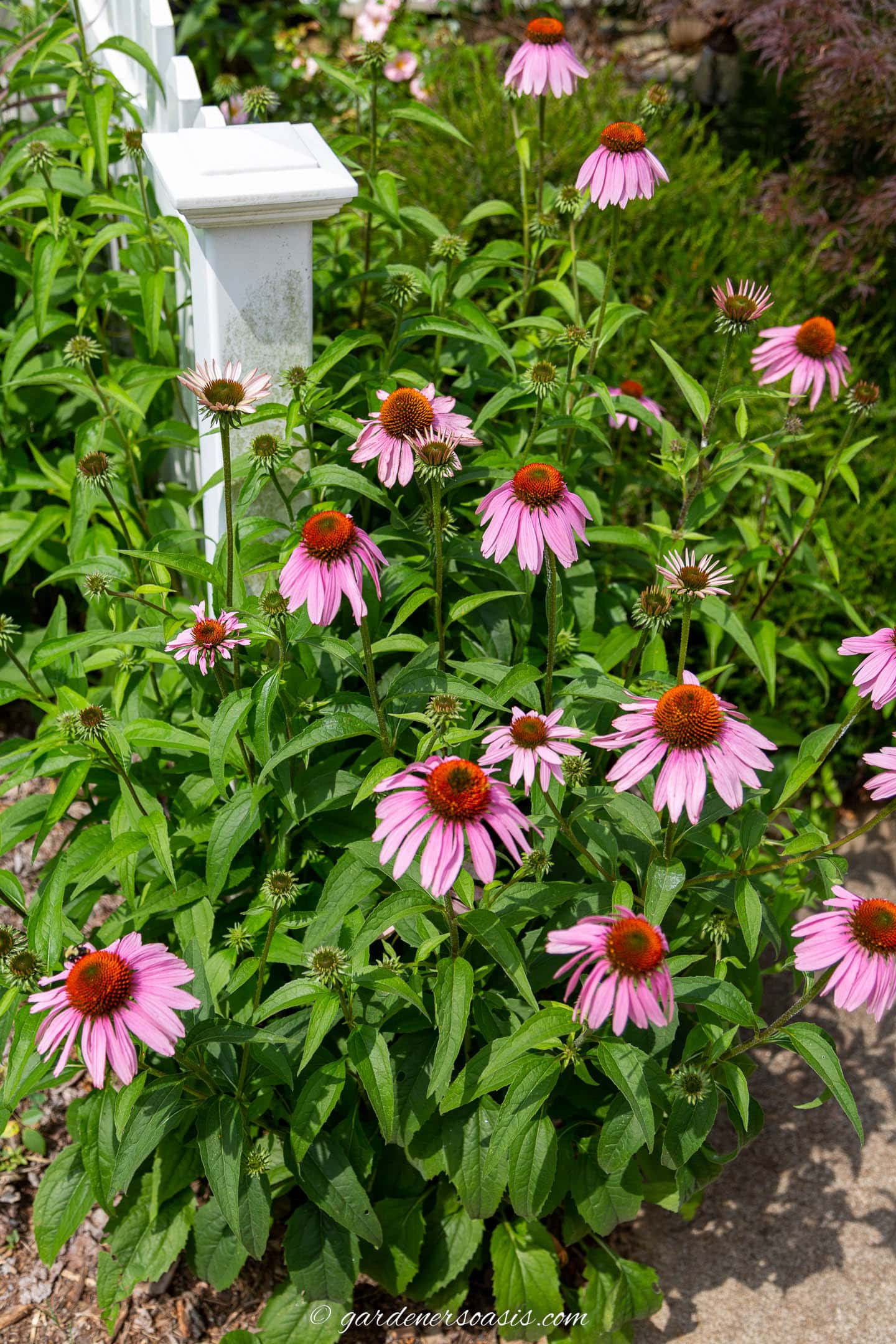
Botanical name: Echinacea
Zones: 3 to 9
Sun: Full sun to partial shade
Height: 18″ to 36″
Width: 18″ to 24″
Flower Color: Purple, pink, yellow, orange, red, and white
Also known as coneflowers, echinacea brings some eye candy to the garden.
Their center protrudes to create a rounded cone shape, surrounded by daisy-like petals.
Rich in nectar, pollinators (even hummingbirds!) will flock to this plant in the garden.
They are very easy to grow, since they thrive in poor soil and are drought tolerant.
And the fibrous root system makes them easy to divide and transplant if you want to add them somewhere else in your garden.
They will also self-seed. But if you planted a fancier variety, they will often revert back to the original purple coneflower when grown from seed.
5 | French Lavender
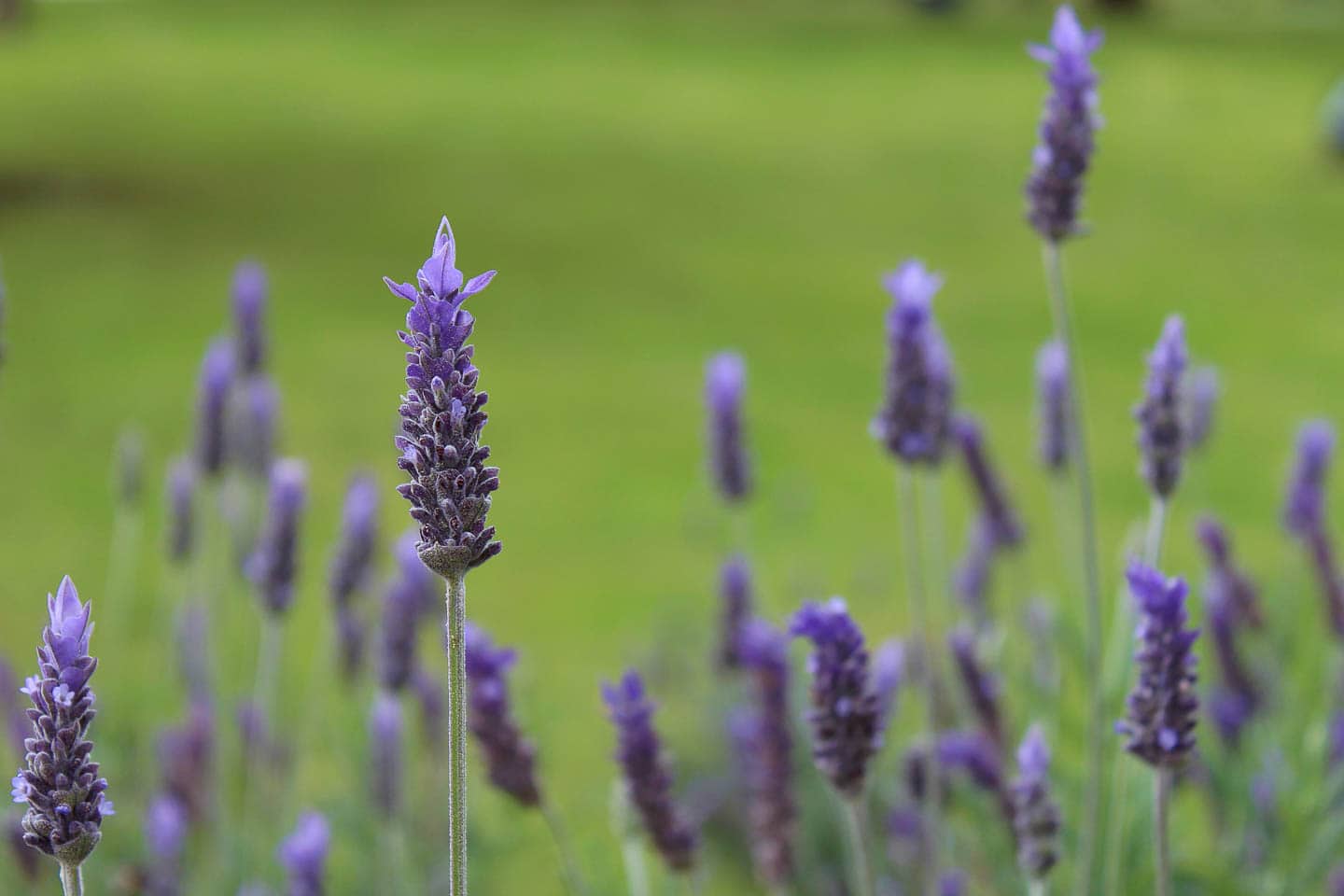
Botanical name: Lavandula dentata
Zones: 8 to 9, treat as an annual in colder zones.
Sun: Full sun
Height: 24″
Width: 18″
Flower color: Purple, blue
If you’re looking for fragrant perennial flowers that bloom all summer, you will certainly love French lavender.
Of course, lavender is most famous for its calm and relaxing scent.
It also makes for an attractive summer flower, and works very well in cut flower bouquets or even as a dried flower.
The perennial plant grows best when it has full sun all day long.
Unlike its English cousin, French lavender is very low maintenance and quite drought tolerant once established.
6 | Garden Phlox
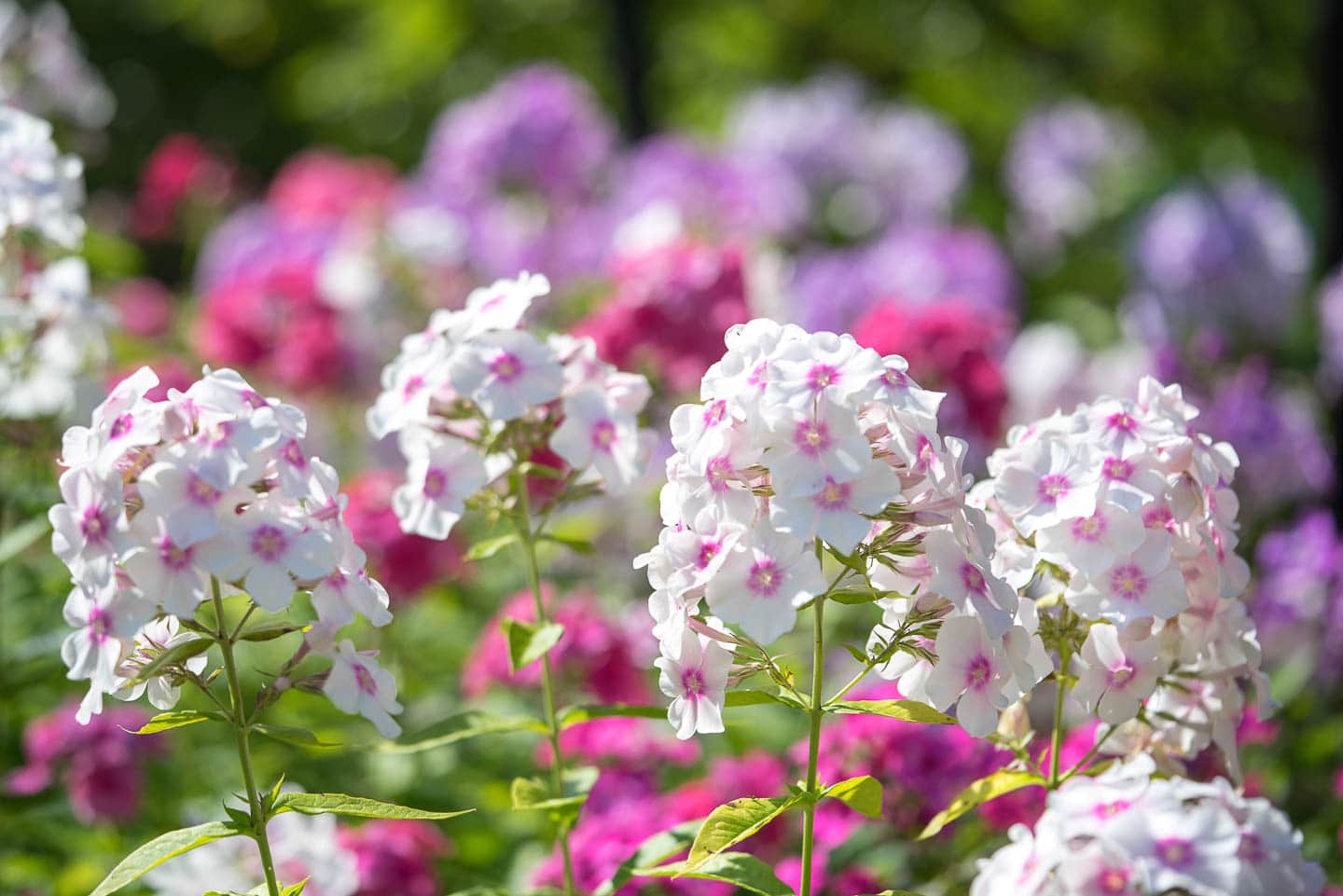
Botanical name: Phlox paniculata
Zones: 4 to 8
Sun: Full sun to partial shade
Height: 24″ to 48″
Width: 24″ to 36″
Flower color: Purple, pink, and white
Garden phlox is a relatively tall native perennial that is perfect for the back of your garden border.
It is a low-maintenance plant that thrives in any soil conditions, is deer-resistant and will even grow under black walnut trees.
And the hummingbirds and butterflies love it.
It is susceptible to powdery mildew, so allow for good air circulation around the plants, and look for resistant varieties. This also means it doesn't do as well in the heat and humidity of the south.
For a longer bloom period, deadhead any spent blooms.
Similar to echinacea, it self seeds but the cultivars generally do not come back true from seed.
7 | Ice Plant
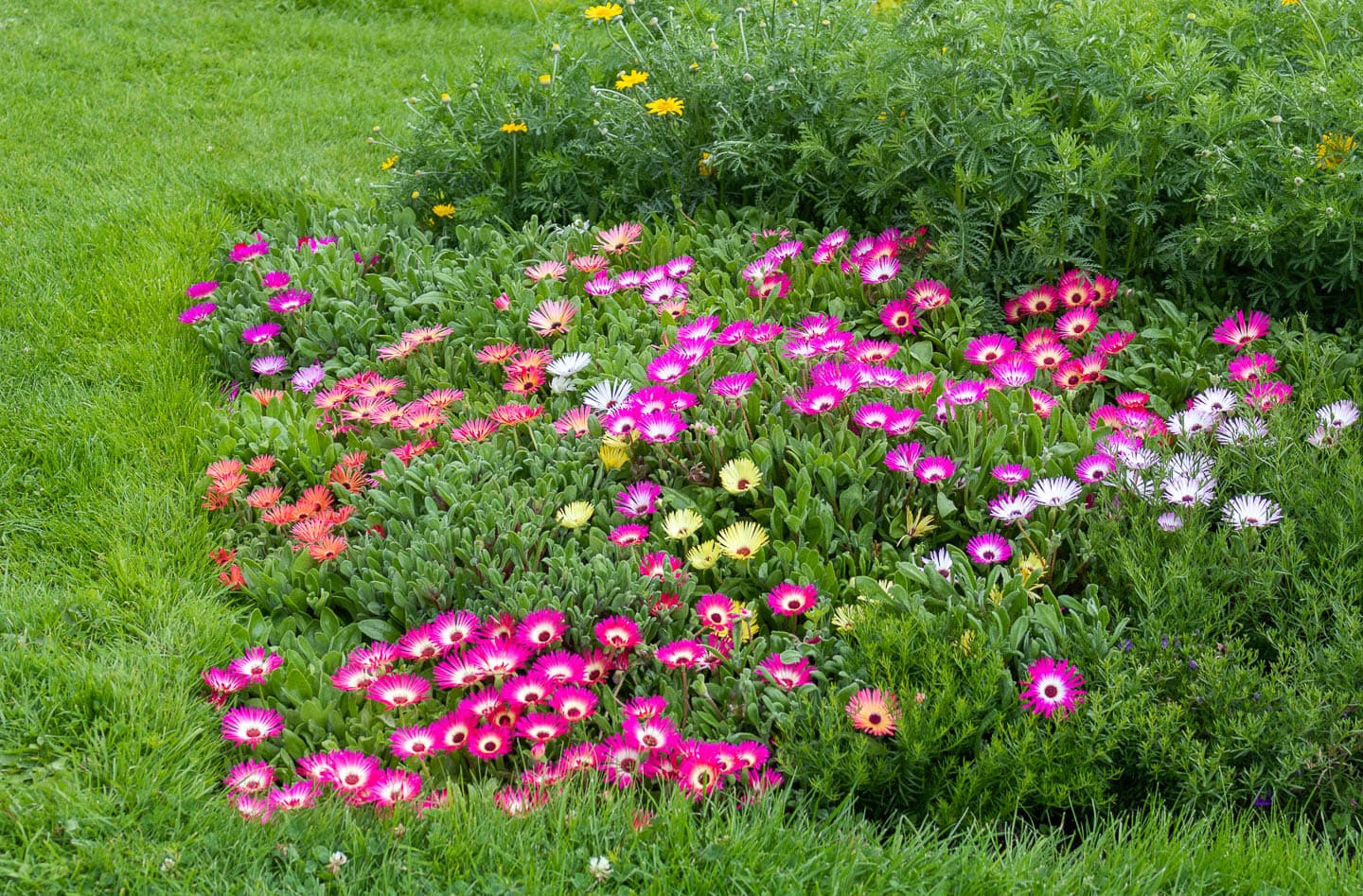
Botanical name: Delosperma
Zones: 6 to 10
Sun: Full sun
Height: 6″
Width: 24″
Flower Color: Purple, pink, red, yellow, and orange
Ice plants are drought-resistant perennials with brightly colored flowers.
They are named after the small hairs that reflect in the sunlight, creating a crystal effect.
This plant is evergreen in warmer winter climates and flourishes in dry, sandy soil. Which makes it perfect for rock gardens or walls.
Ice plants do not do well in soils with poor drainage, so avoid planting in clay or other wet locations.
In some areas, they are considered invasive, so be sure to do your research before planting.
8 | Red Hot Poker
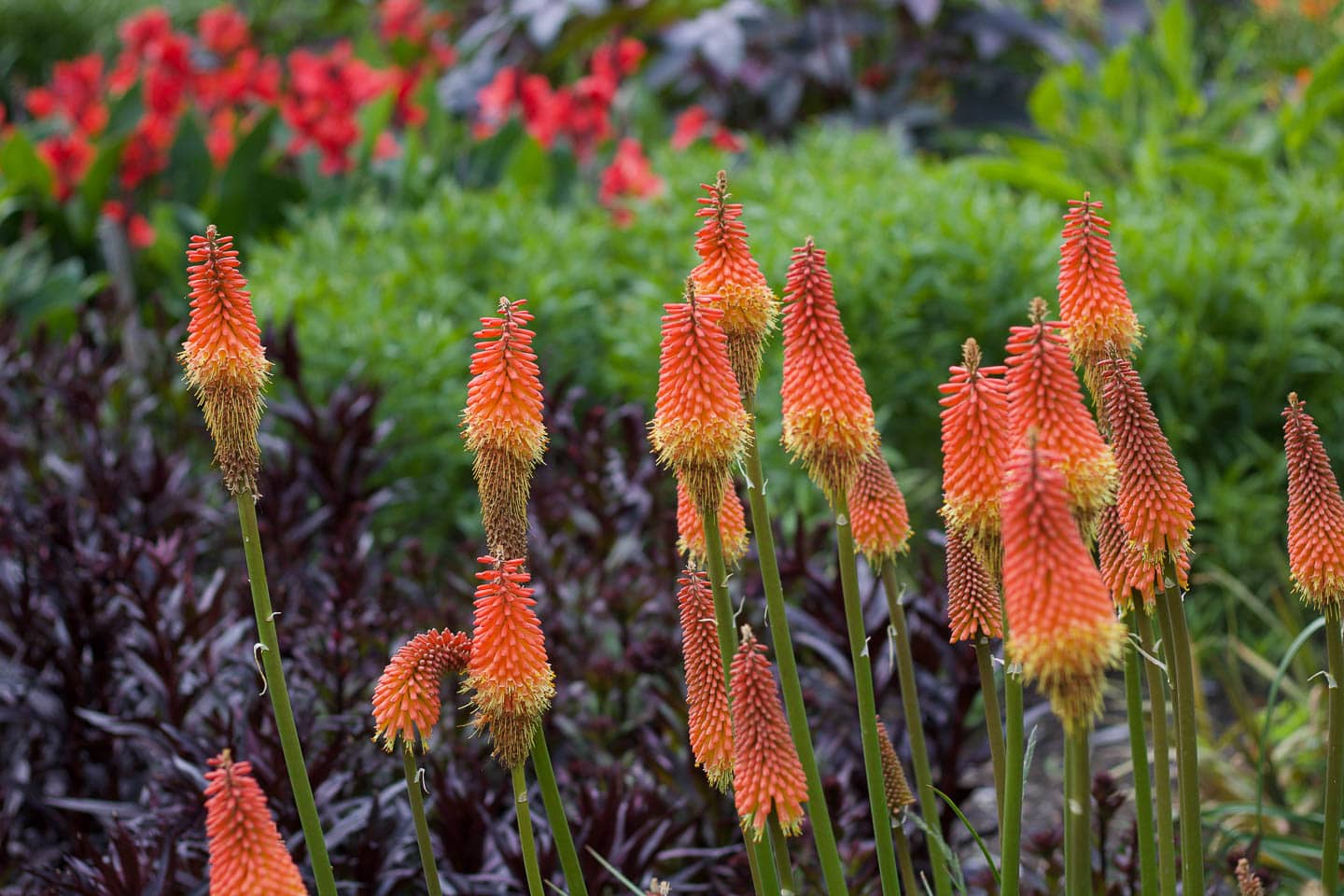
Botanical name: Kniphoff
Zones: 5 to 9
Sun: Full sun
Height: 12″ to 48″
Width: 24″
Flower Color: Red, orange, and yellow
Also called torch lilies (though they aren’t a true lily), the red hot poker makes for a unique statement flower.
Often growing 3 to 4 feet tall, these plants are drought tolerant, attract hummingbirds and other pollinators, and thrive in full sun.
They are also disease free, and resistant to both deer and rabbits.
To promote continuous blooms, deadhead the flowers when they start to turn brown.
9 | Russian Sage
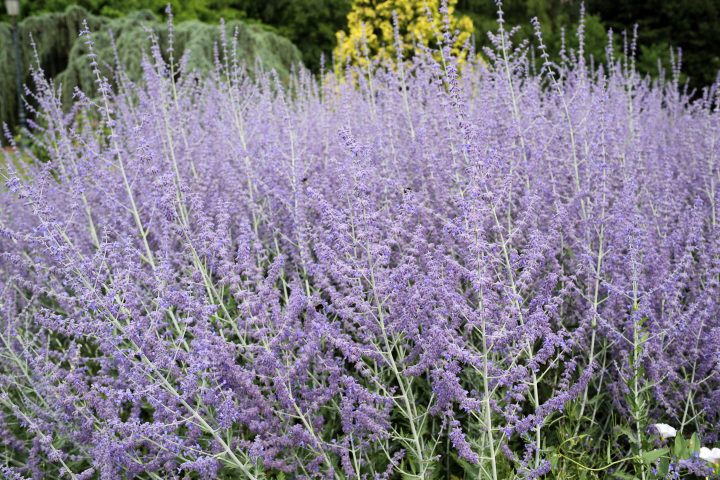
Botanical name: Perovskia atriplicifolia
Zones: 5 to 10
Sun: Full sun
Height: 18″ to 36″
Width: 24″ to 36″
Flower color: Blue, purple, white
Russian sage is a long blooming perennial with silver gray foliage and spiky clusters of flowers, which are so plentiful they almost completely cover the leaves.
It makes enough of a statement to be grown as a single specimen plant. Or group them together to create a tall ground cover that will bloom all summer long.
Because of its tolerance for dry conditions and full sun, Russian Sage is a popular xeriscaping plant (eliminating the need for water and irrigation).
10 | Shasta Daisy
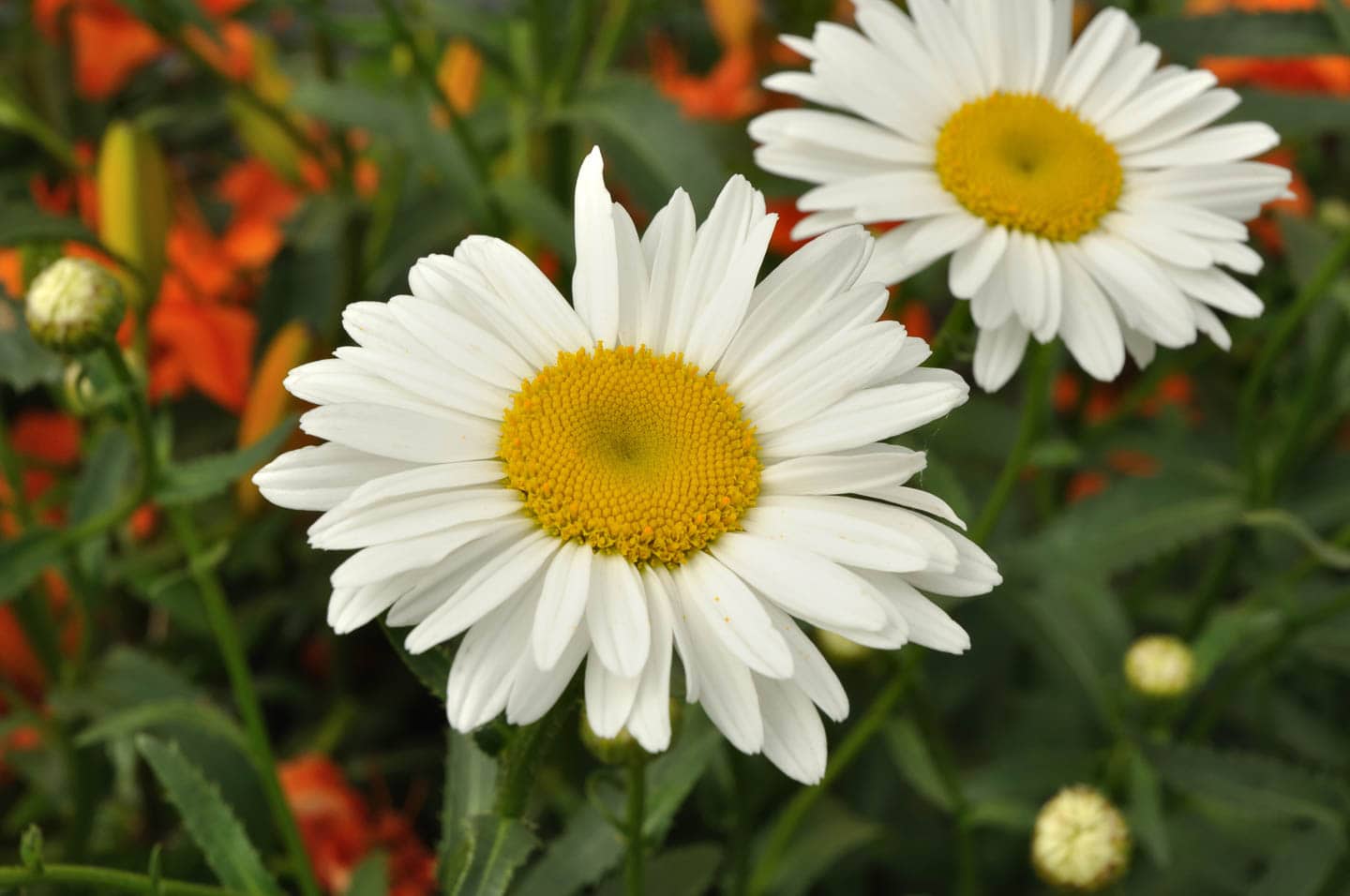
Botanical name: Leucanthemum × superbum
Zones: 5 to 9
Sun: Full sun
Height: 6″ to 48″
Width: 12″ to 24″
Flower color: White
Shasta daisies are a deer and rabbit-resistant perennial that attracts butterflies and is drought tolerant once established.
And it comes in many different shapes and sizes. Depending on the cultivar, you can find classic-looking daisies to frilly petals, although most still have the traditional daisy colors – white leaves with a yellow center.
Deadhead the flowers to promote more blooms.
Shasta daises will self-seed but the offspring don't always look like the parent plants.
So dividing them is the best way to get more of them in your garden.
11 | ‘Victoria Blue' Salvia
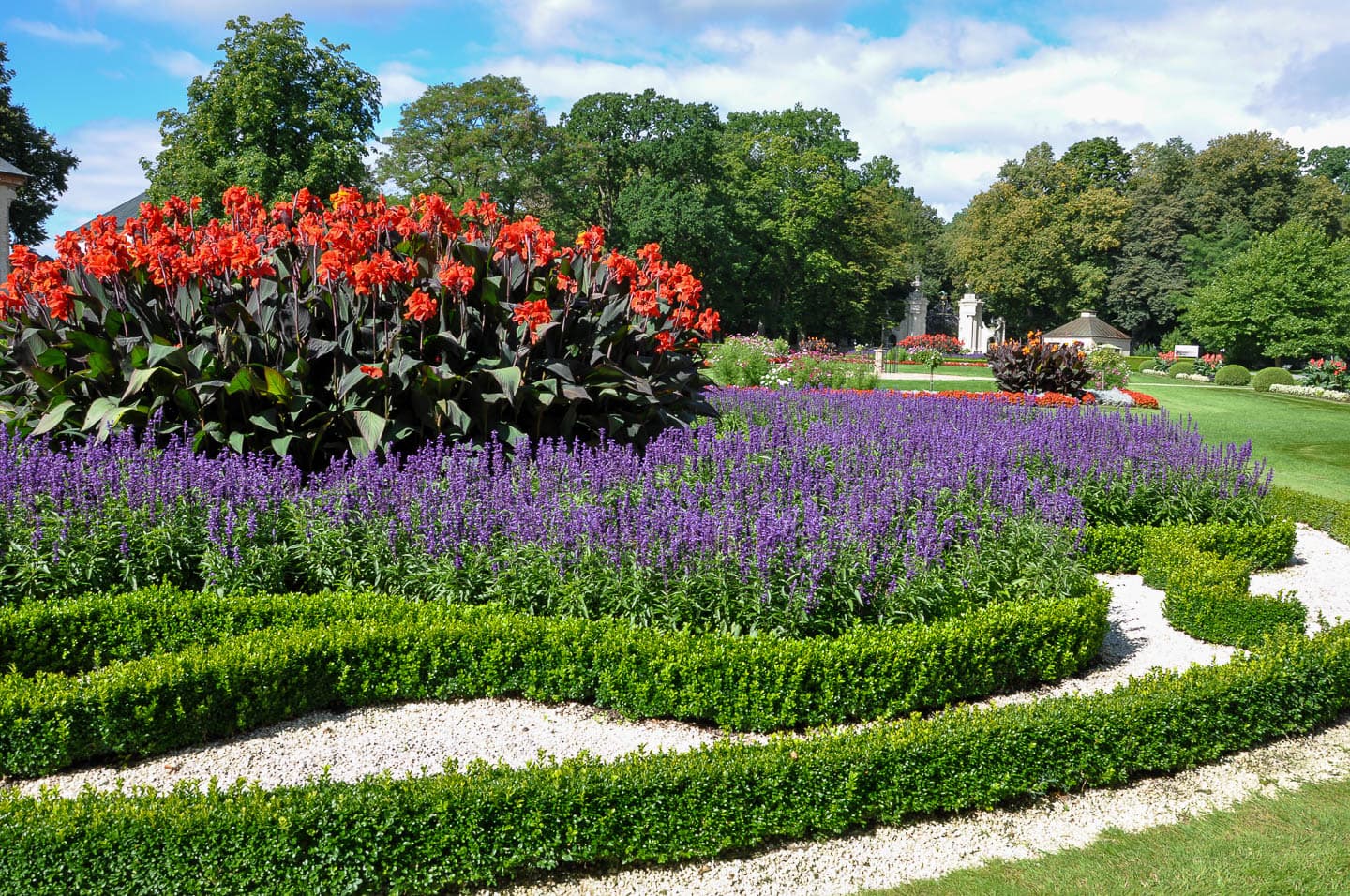
Botanical name: Salvia farinacea ‘Victoria Blue'
Zones: 8 to 11, plant as an annual in colder zones.
Sun: Full sun
Height: 15″ to 24″
Width: 12″ to 18″
Flower color: Blue-purple
If you want abundant flowers, consider growing Victoria blue salvia.
It is native to southwestern United States and adds a beautiful blue-purple color to your garden.
Like most salvias, these plants grow best in full sun, are drought-tolerant, are not particular about soil type or pH, and attract butterflies and hummingbirds.
They look wonderful in containers or massed together as a bedding plant. And make great cut flowers to add to a bouquet.
While they are perennials in warmer climates, they are planted as an annual in northern zones.
12 | Yarrow
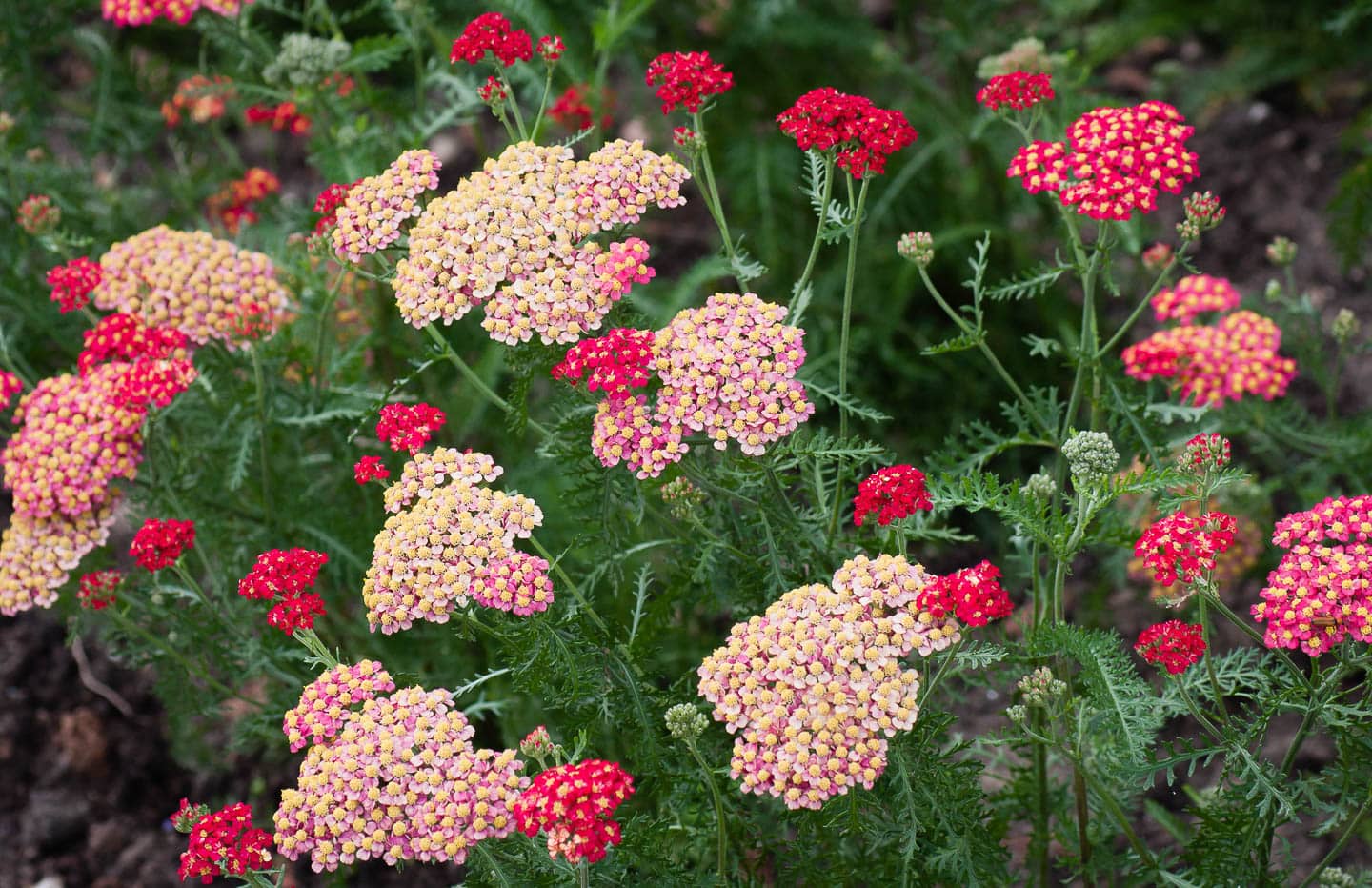
Botanical name: Achillea millefolium
Zones: 3 to 9
Sun: Full sun
Height: 24″ to 36″
Width: 24″ to 36″
Flower color: White, yellow, pink
Yarrow is a perennial with flat topped or dome shaped clusters of flowers that rise high above the leaves and last all summer long.
It thrives in hot, dry conditions with full sun and will not do well in wet soil.
This plant tends to get leggy if given too much fertilizer or grown in too much shade.
Deadhead to promote additional blooms and keep the plant looking tidy.
Some varieties are invasive so look for the clumping ones (such as Achillea ‘Moonshine') if you don't want the extra work of containing them.
13 | ‘Moonbeam' Coreopsis
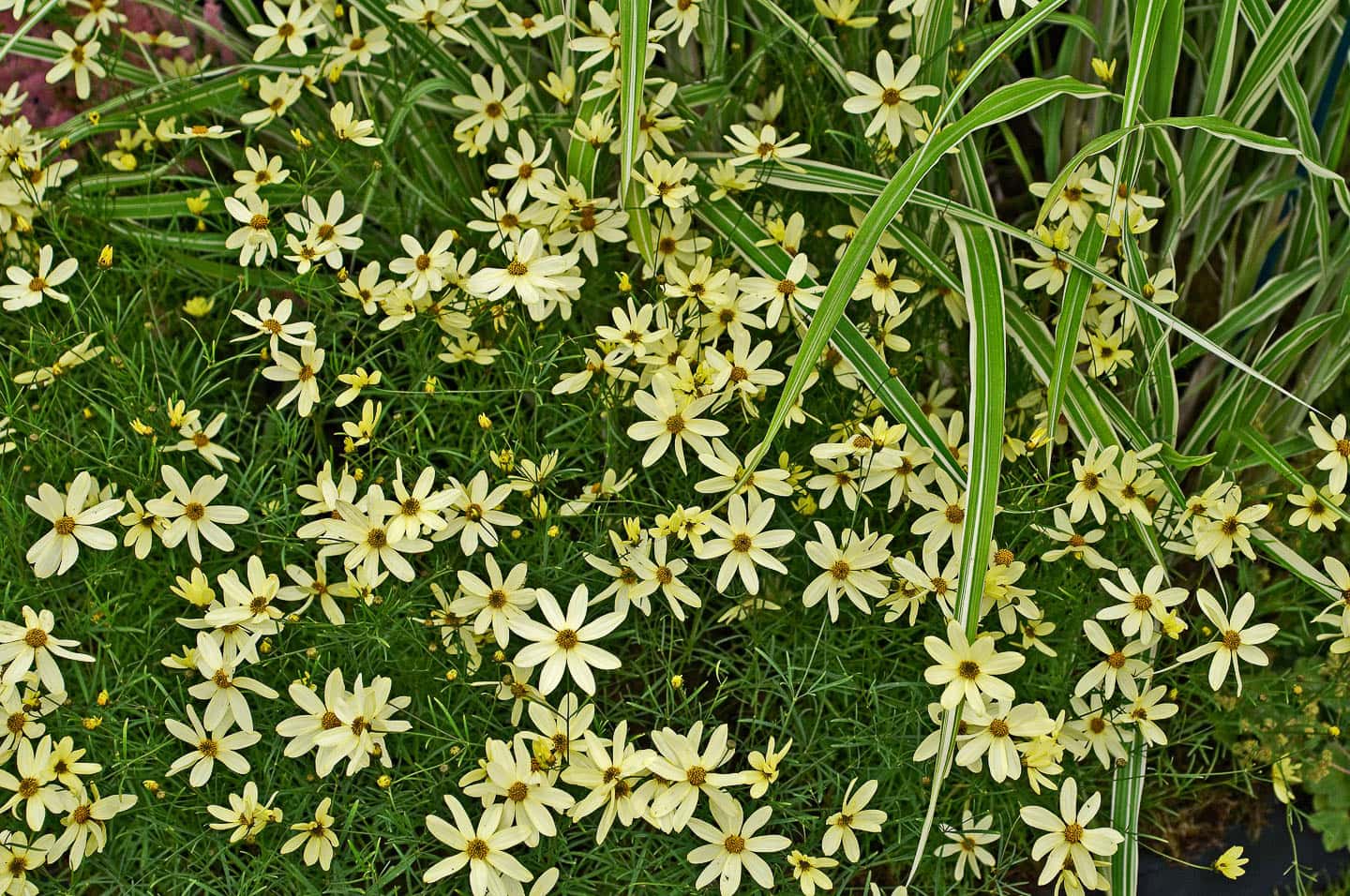
Botanical name: Coreopsis verticillata
Zones: 3 to 9
Sun: Full sun
Height: 18″ to 24″
Width: 18″ to 24″
Flower color: Yellow
‘Moonbeam' Coreopsis is a full-sun perennial that has feathery foliage and is absolutely covered in yellow blooms from early summer to fall.
This plant grows in a wide variety of soil conditions, is drought tolerant and deer resistant. So it isn't surprising that it won the Perennial of the Year award in 1992.
It can be a bit temperamental to get started, but is low maintenance once established.
14 | ‘Autumn Joy' Sedum
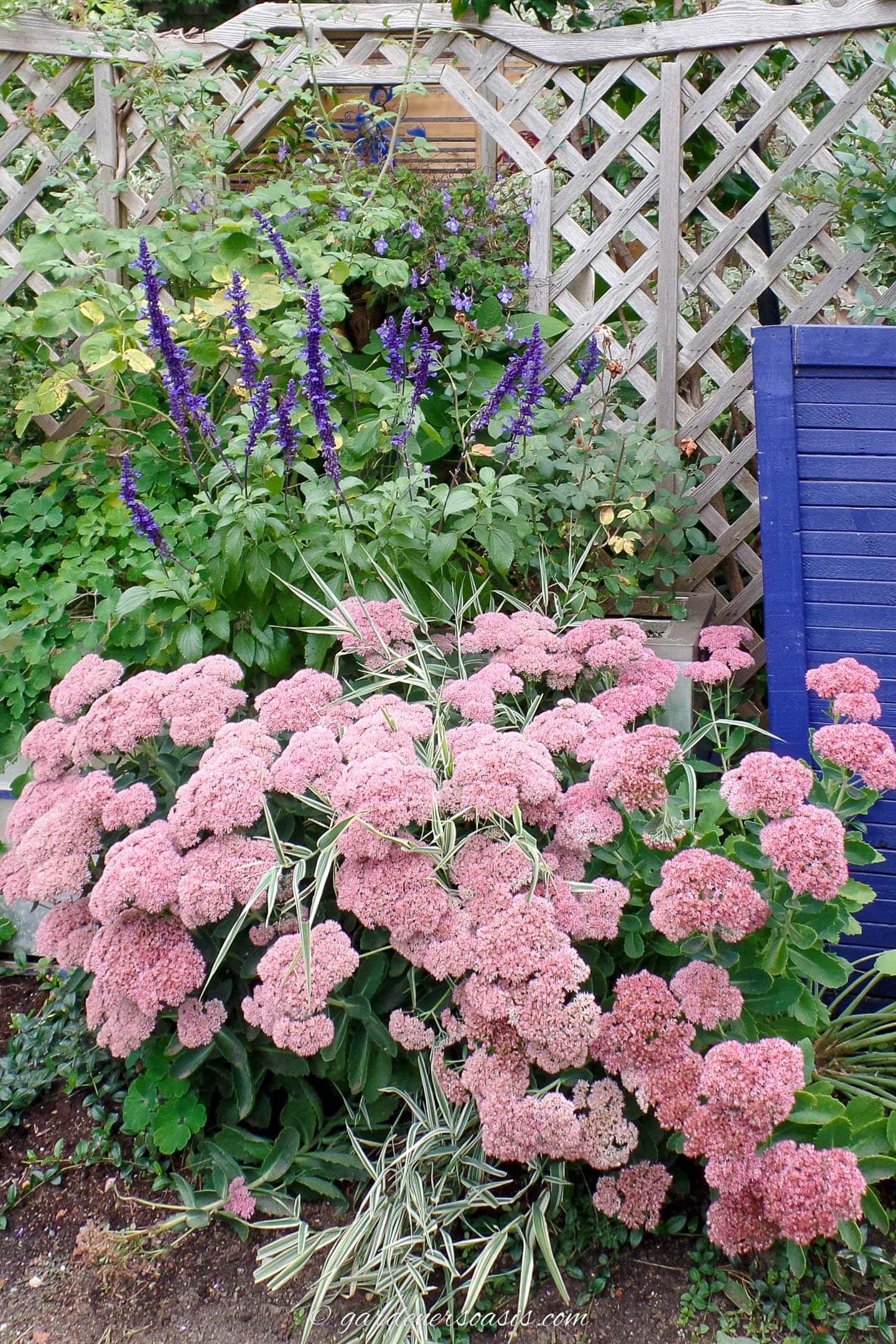
Botanical name: Sedum spectabile
Zones: 3 to 11
Sun: Full to part sun
Height: 18″ to 24″
Width: 24″ to 36″
Flower color: Pink
‘Autumn Joy' Sedum is a low maintenance succulent perennial with a long bloom time.
It is easy to grow, isn't invasive, and doesn't require pruning or deadheading.
This plant comes back reliably every year, producing pink flowers in the summer that turn to copper as they age.
15 | Rose Mallow (Perennial Hibiscus)
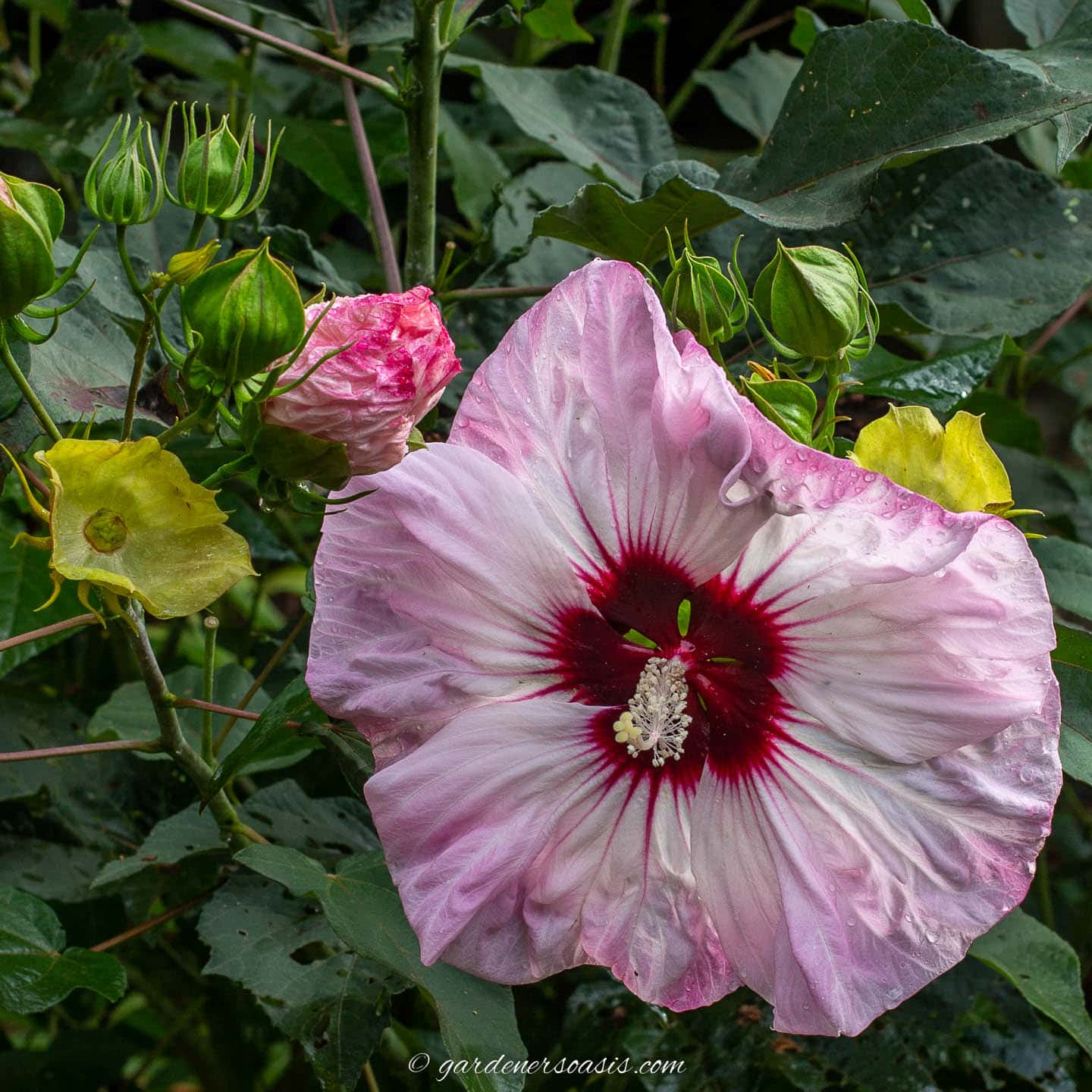
Botanical name: Hibiscus moscheutos
Zones: 4 to 9
Sun: Full sun
Height: 3′ to 6′
Width: 2′ to 5′
Flower color: Pink, red, white
Rose mallow (also known as swamp mallow) is a hardy perennial that looks like it grows in the tropics.
It has huge 8″ to 10″ flowers that really make a statement at the back of your garden bed.
Although each flower only lasts for a day or two, the plant produces so many of them that it is constantly in bloom.
For the most prolific blooms, look for varieties that are labeled as indeterminate (such as the Summerific series from Proven Winners). They produce flowers all the way up and down the stems and literally bloom for months. (And the Summerific series doesn't self seed which means less work if you don't want them to spread).
This plant needs to be kept well-watered in order to keep producing flowers.
That completes our list of perennial flowers that bloom all summer long. Hopefully, you've found some long-blooming perennials to add to your landscape design.
Other perennials you might like
- Low maintenance blue-flowering perennials
- Plants that attract hummingbirds
- Best perennials for clay soil
- Ground cover perennials for shade
- Low maintenance full-sun perennials
Have comments, questions or additions to our list of long blooming perennials? Tell us in the section below.
This post was originally published on August 25, 2022 but was updated with new content on November 23, 2024.

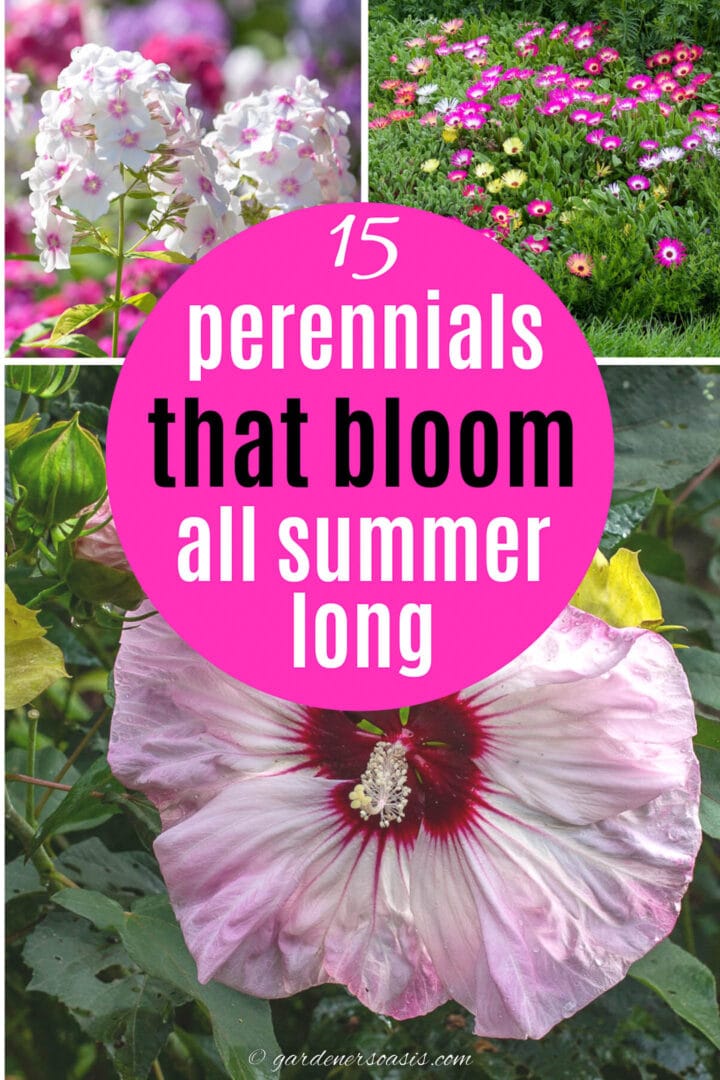
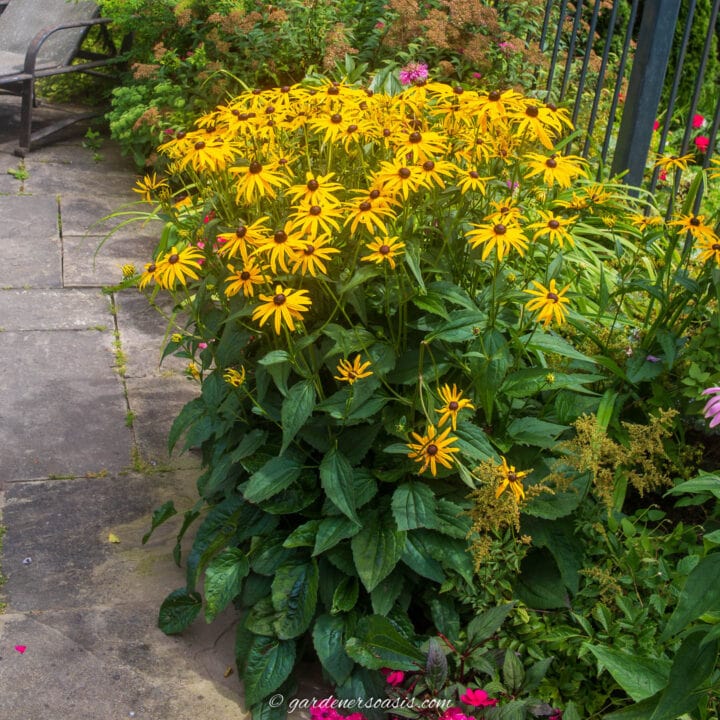
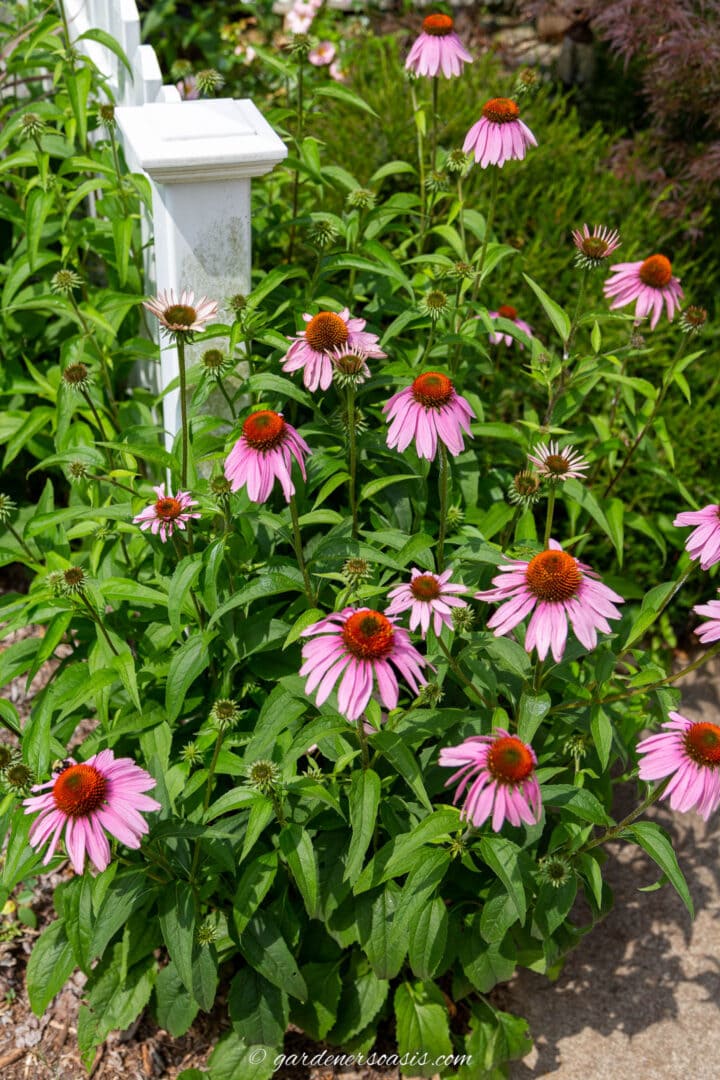
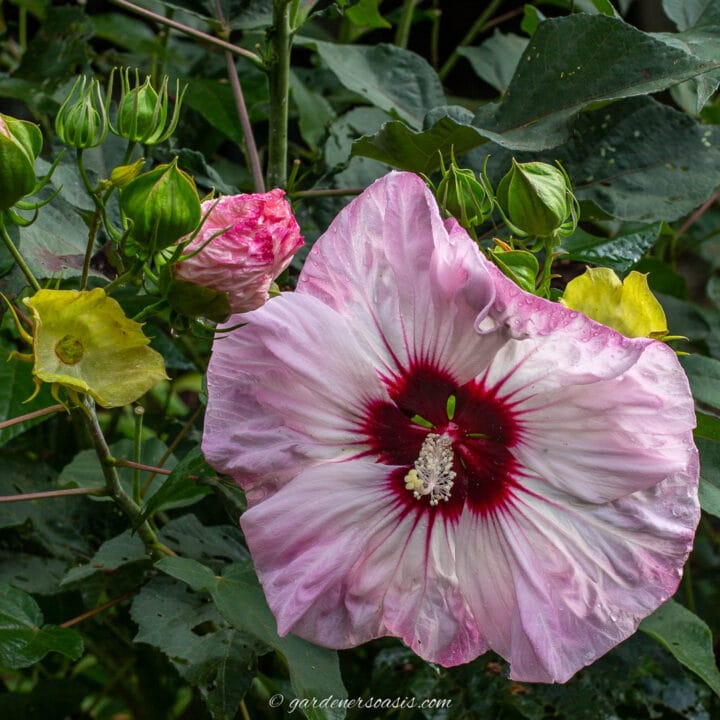
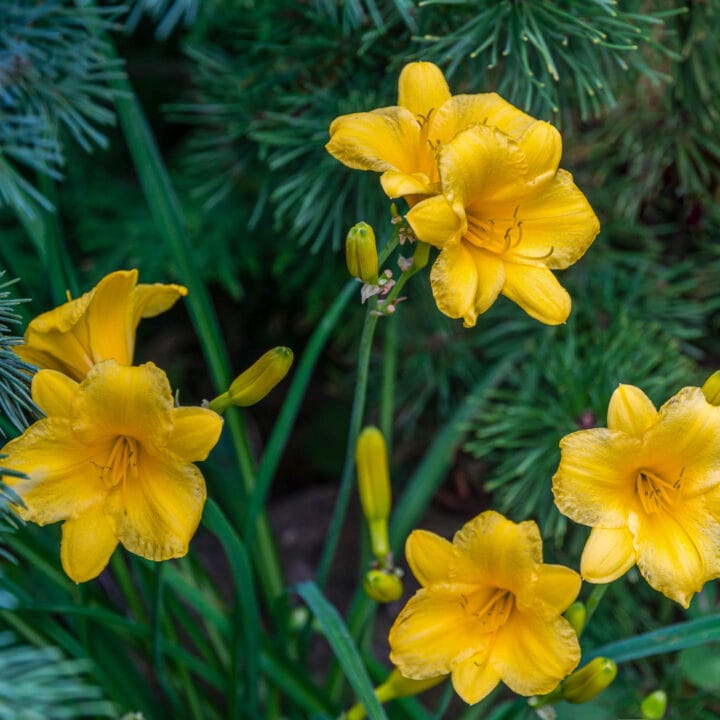
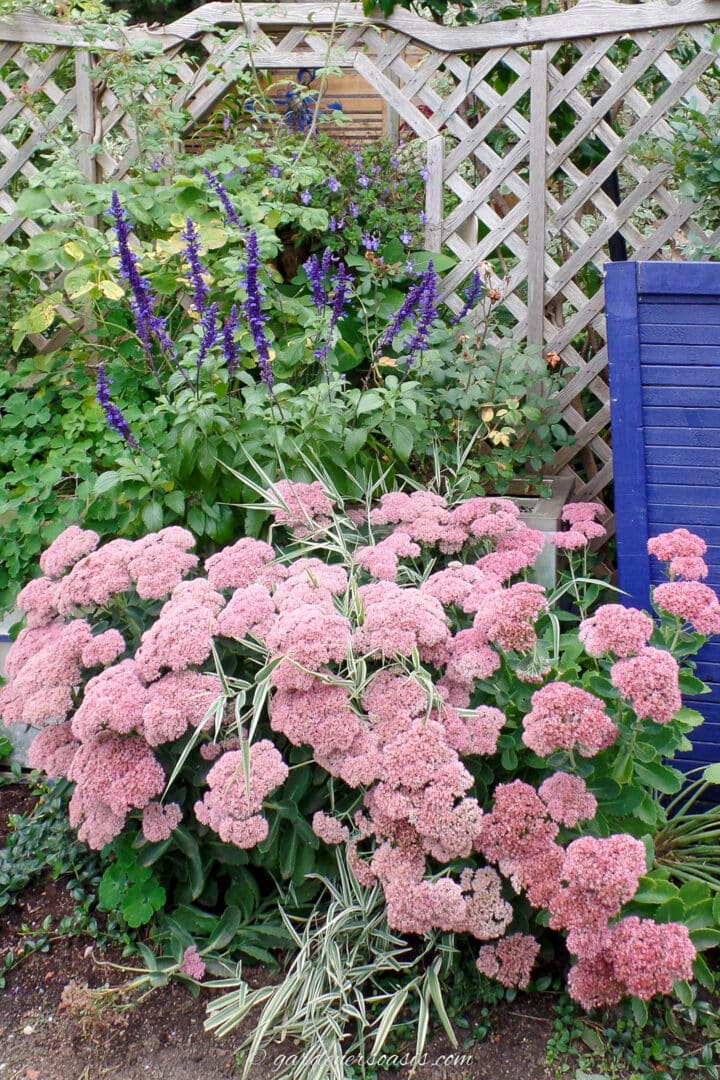
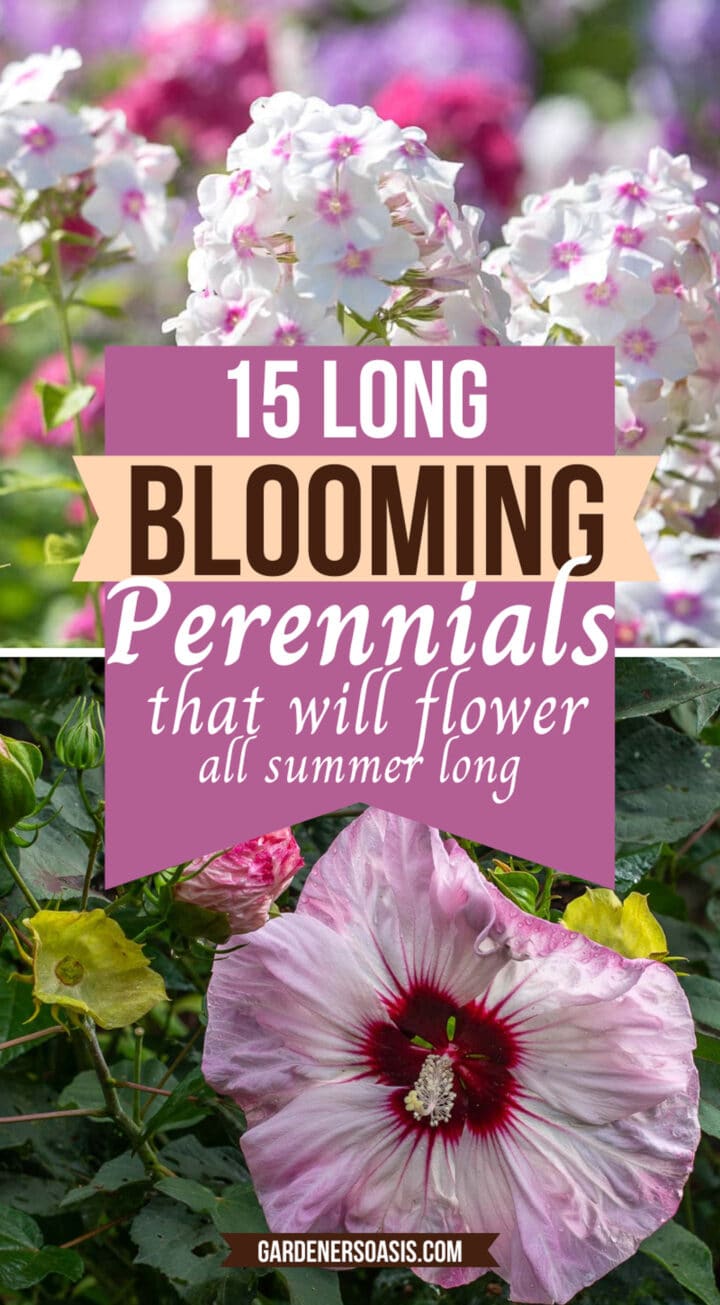
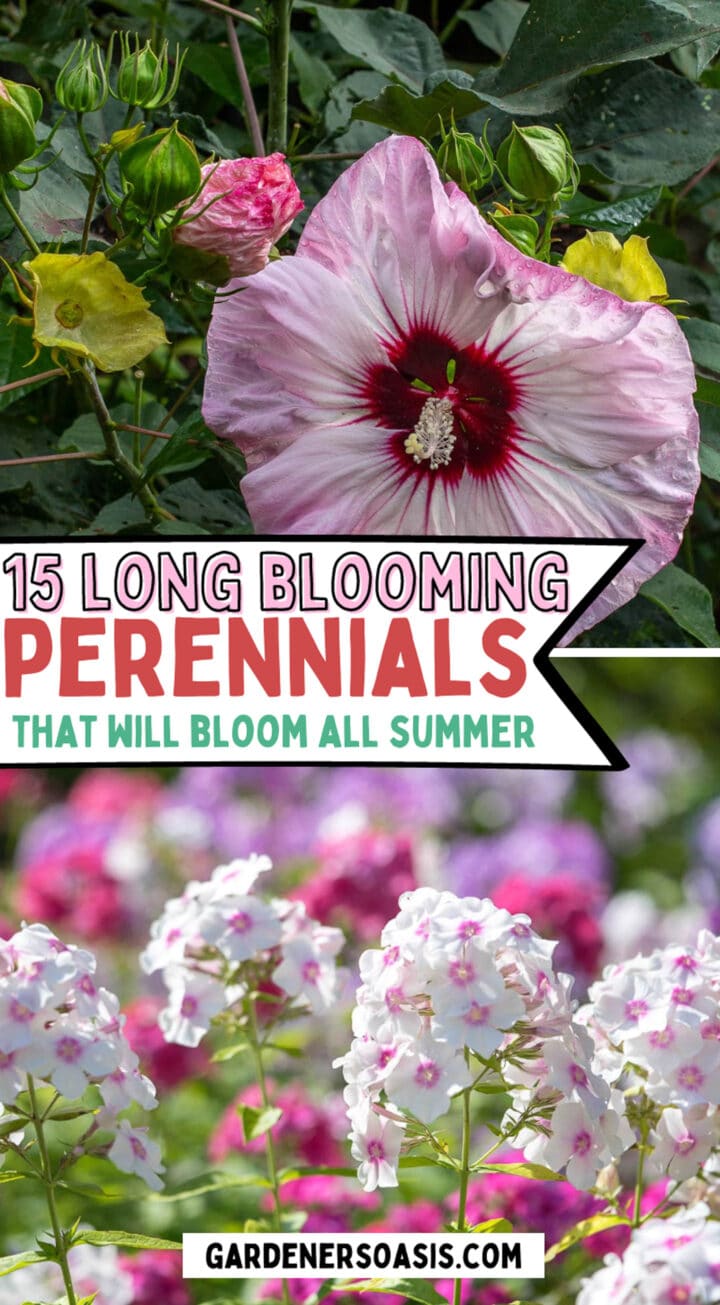
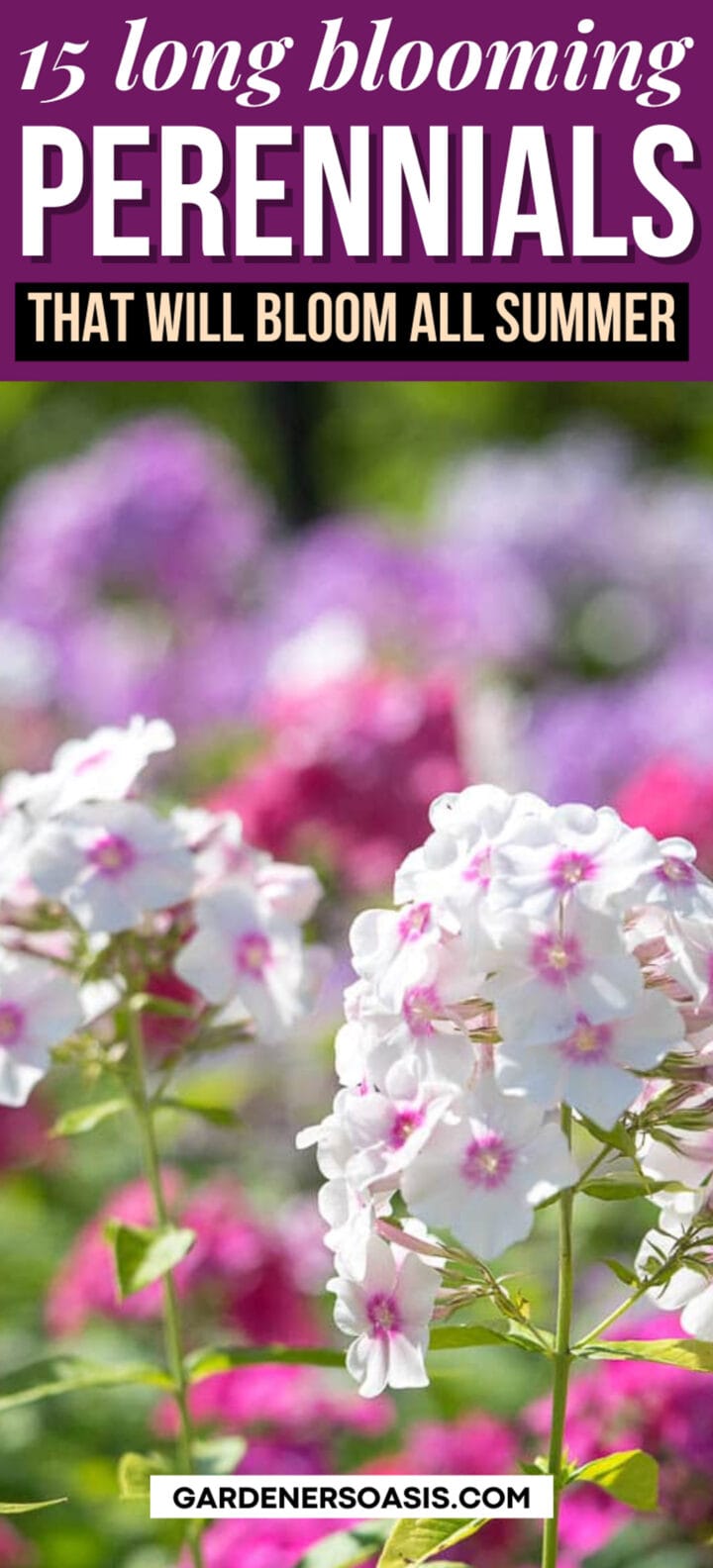
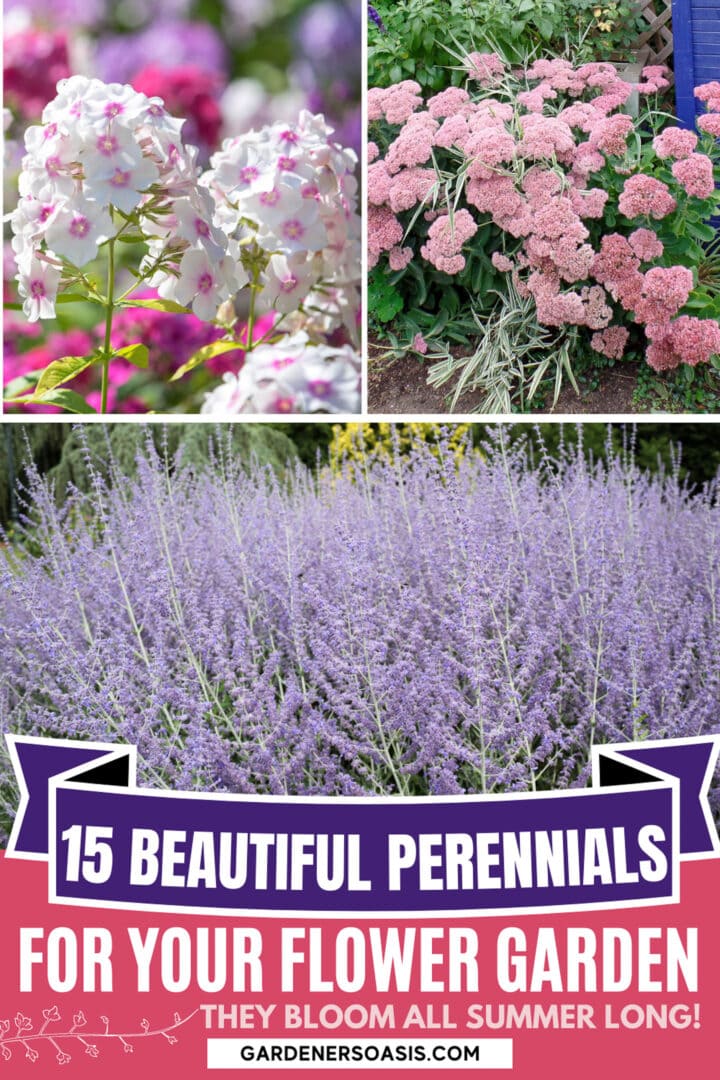
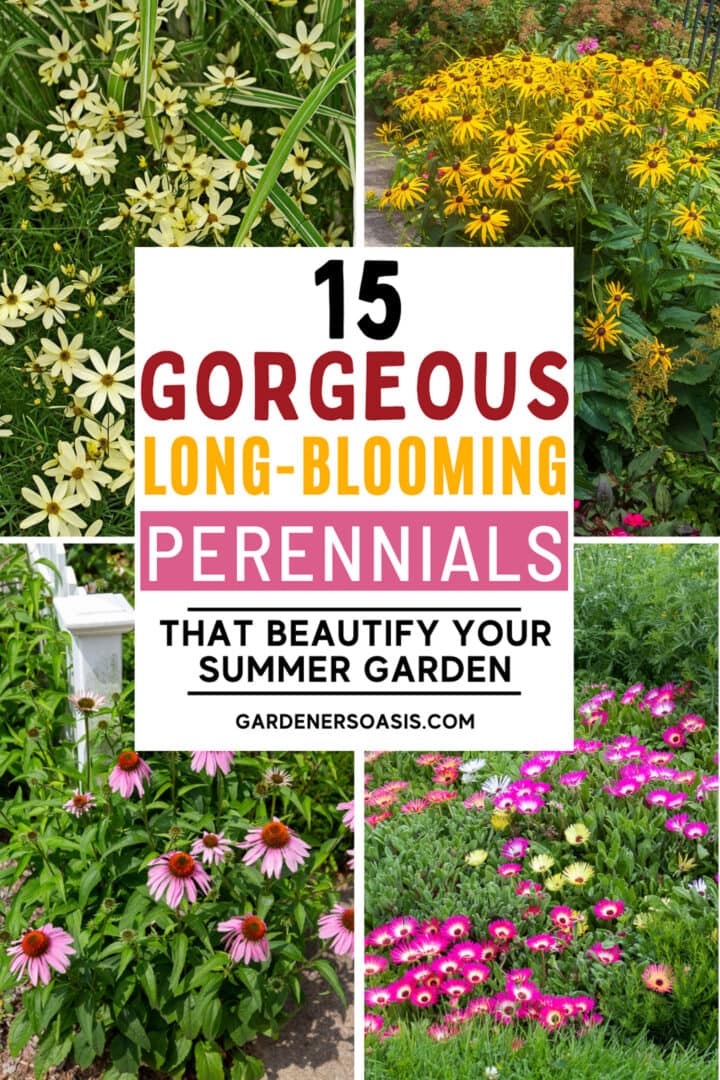
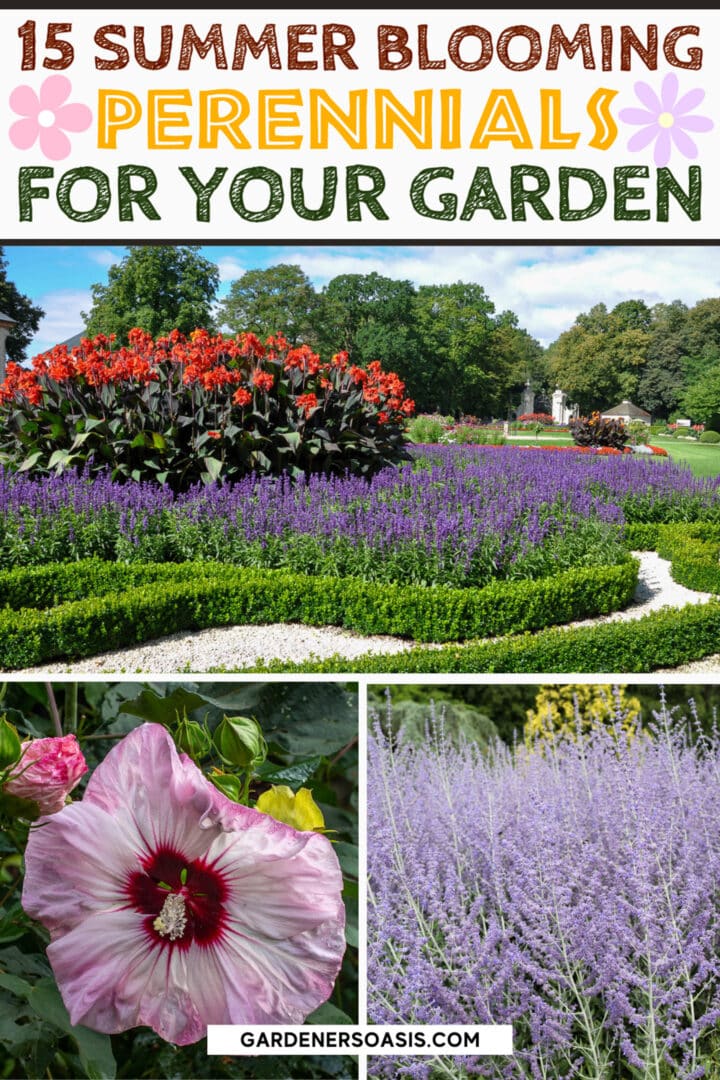
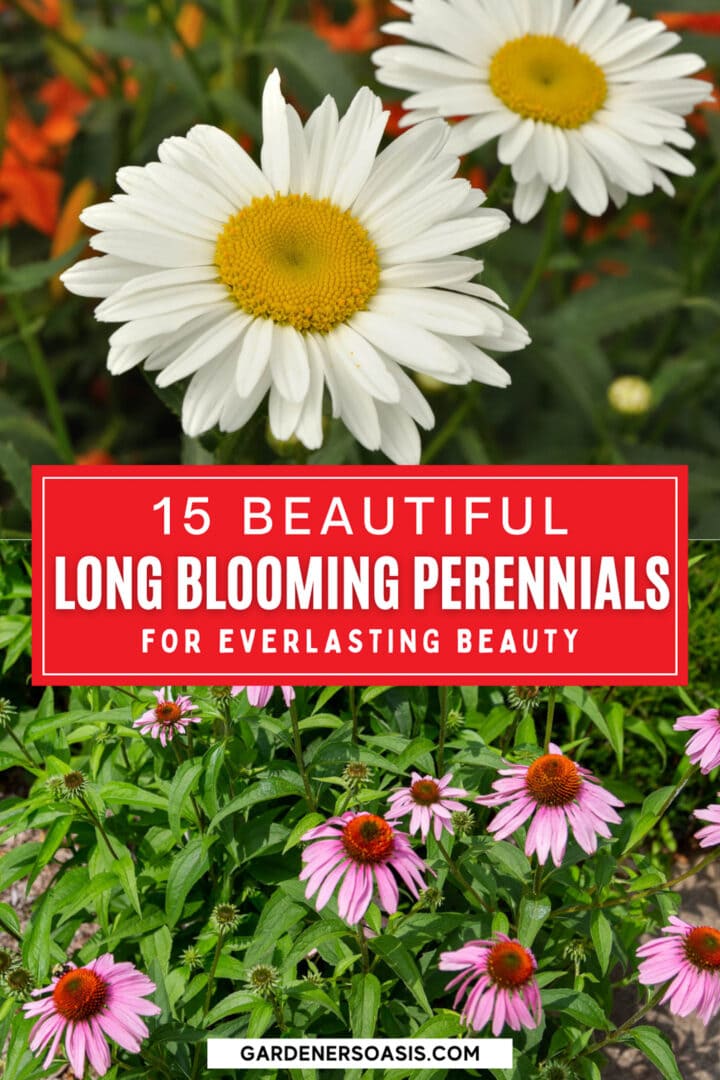
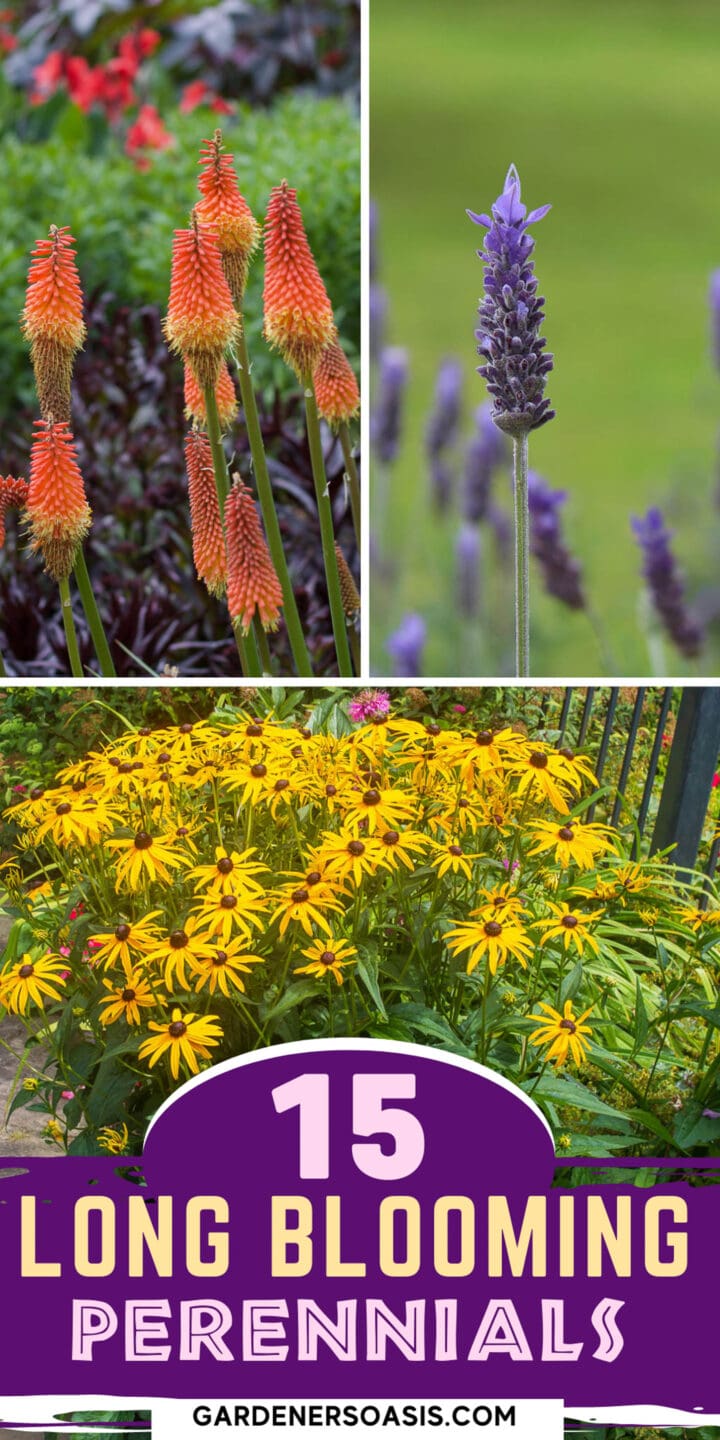
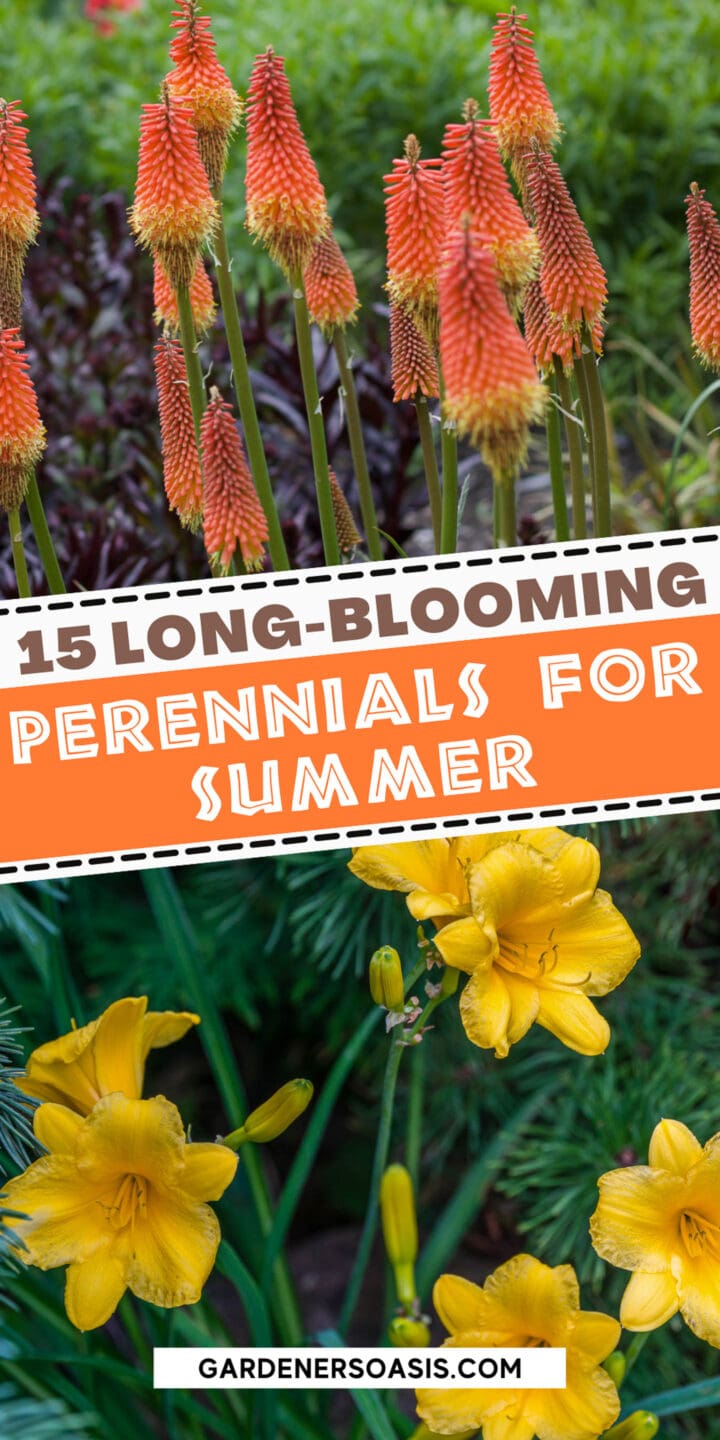
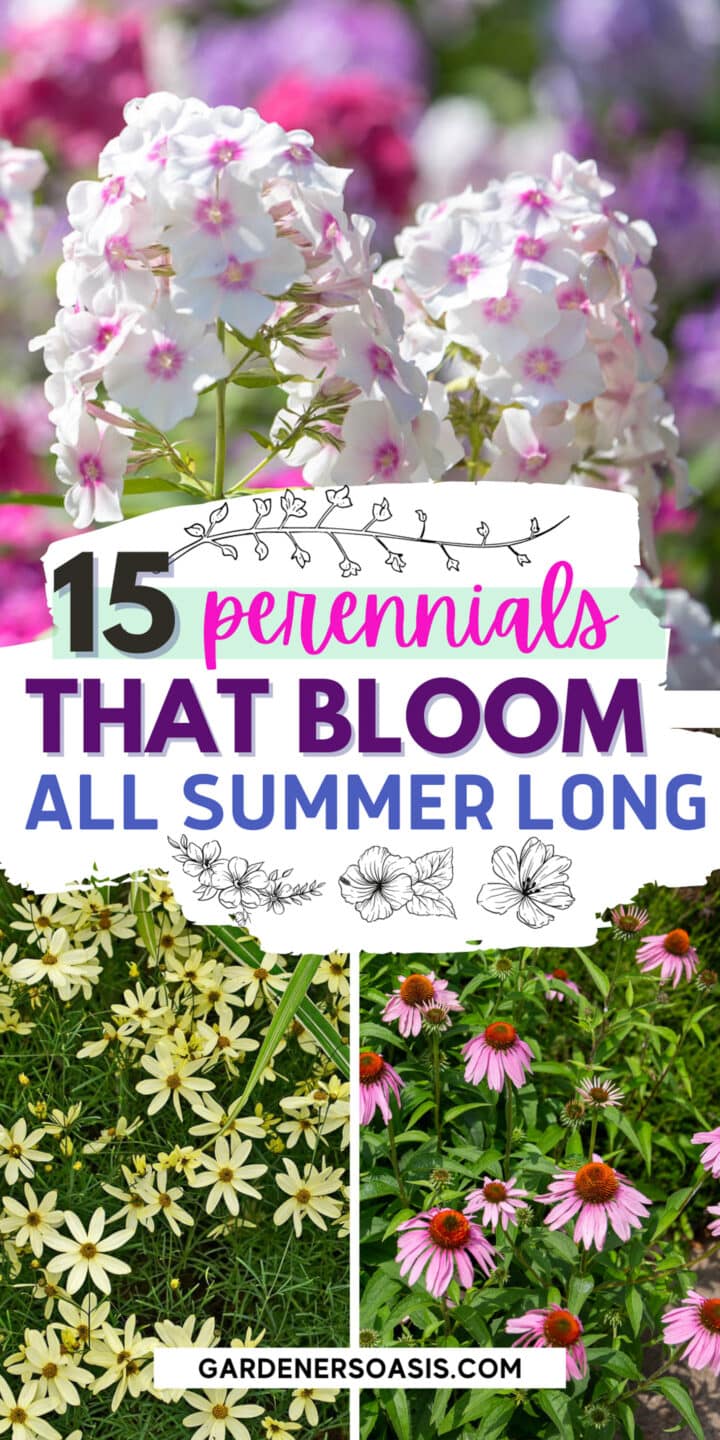
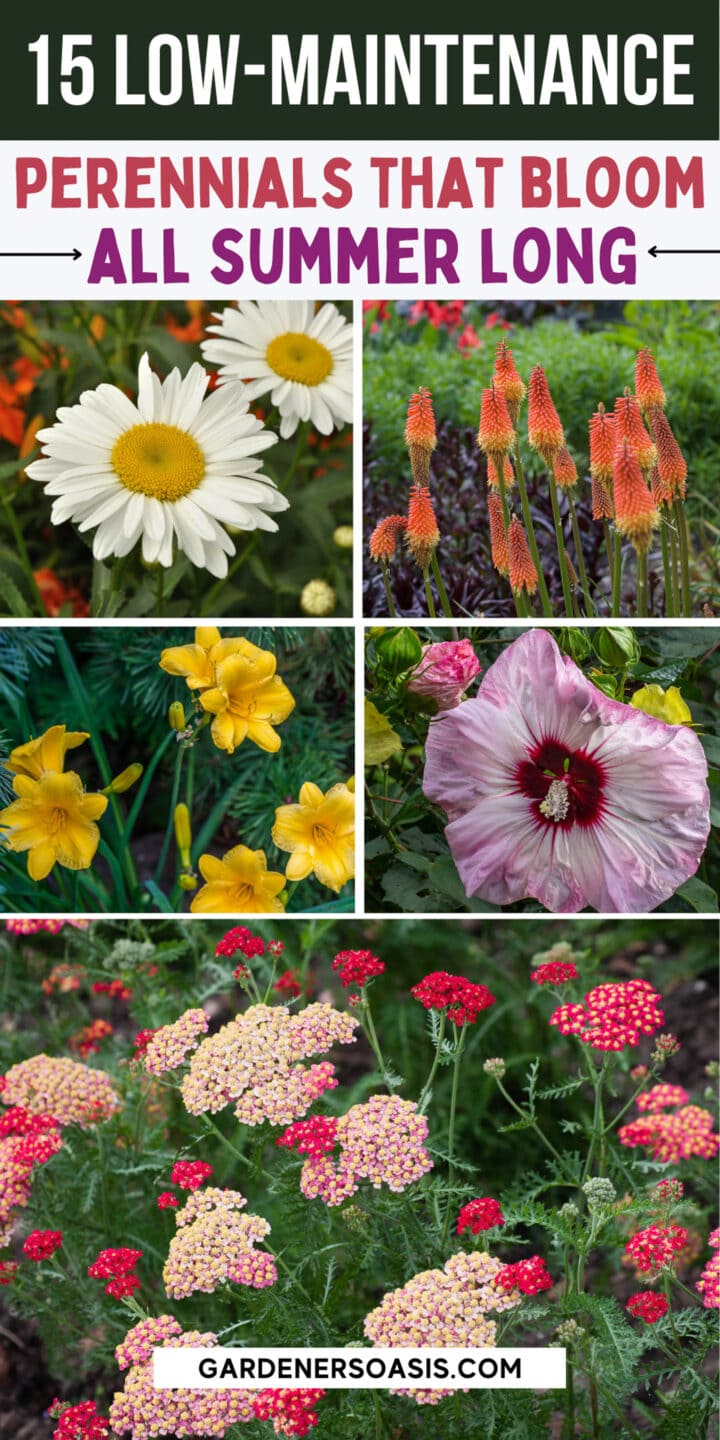
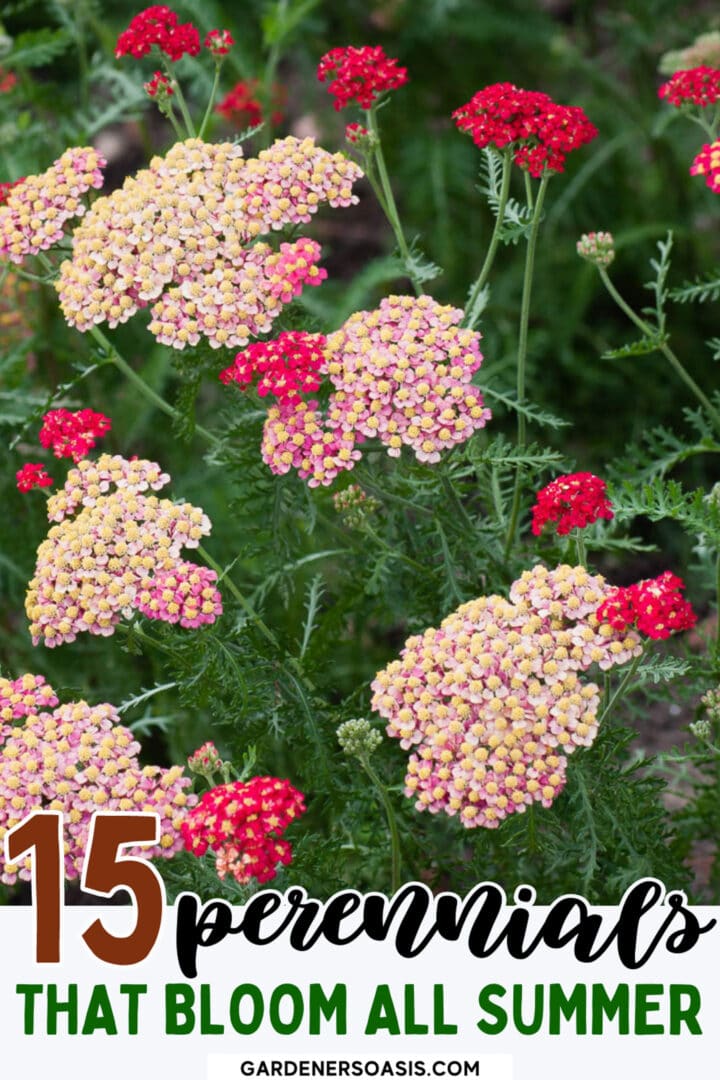
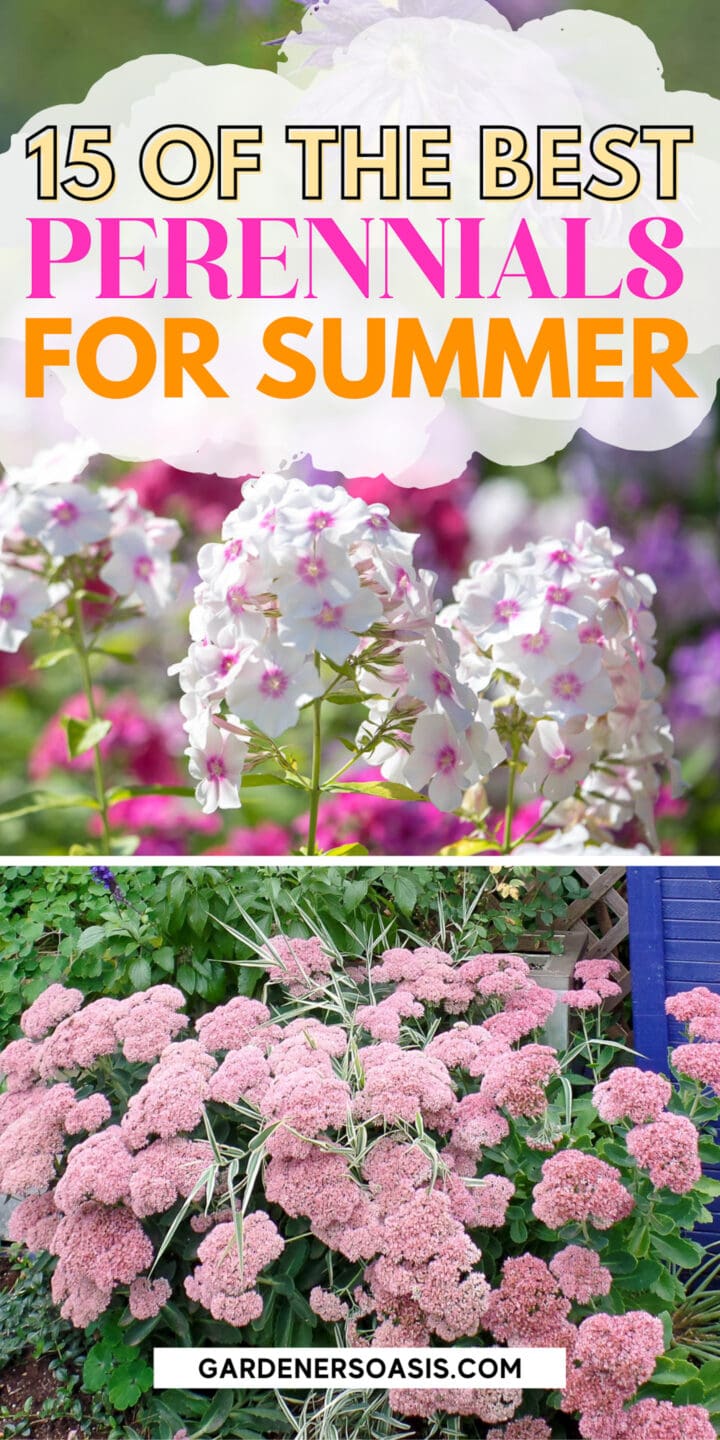
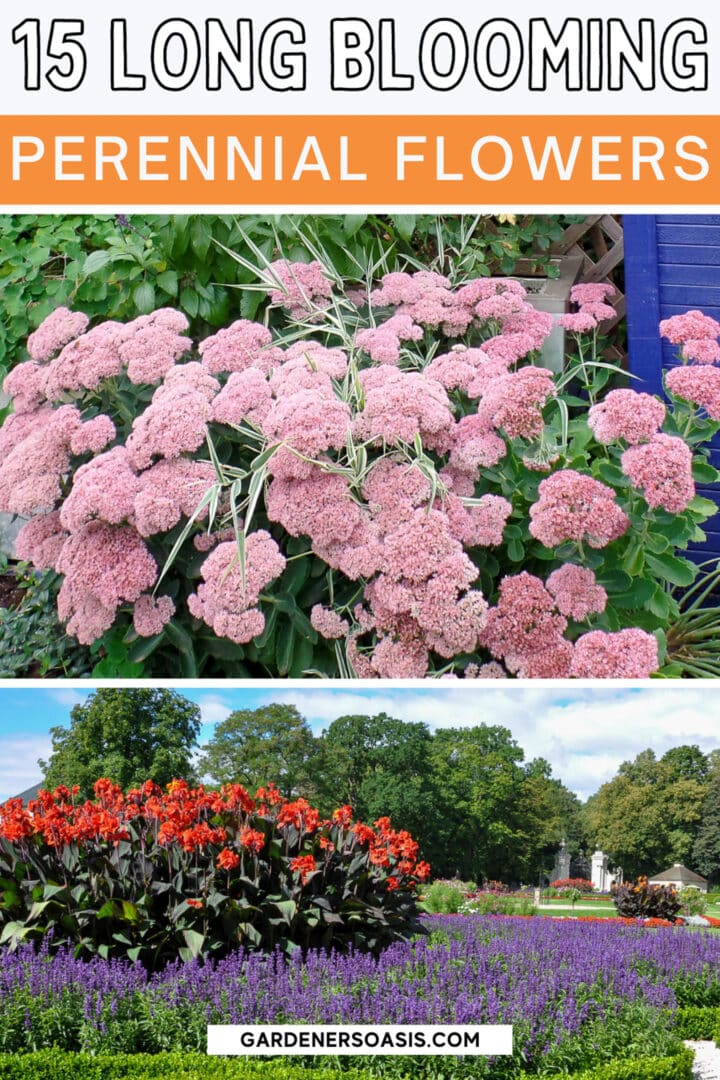
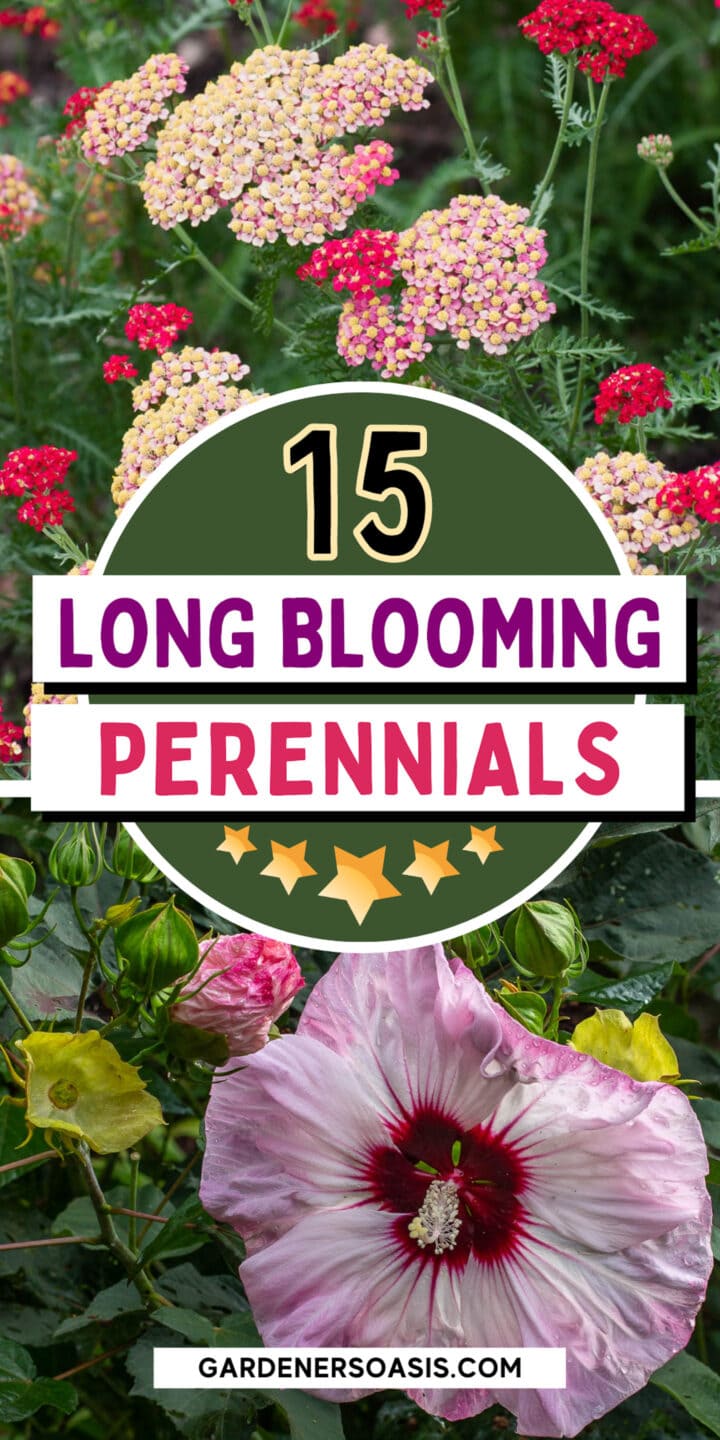
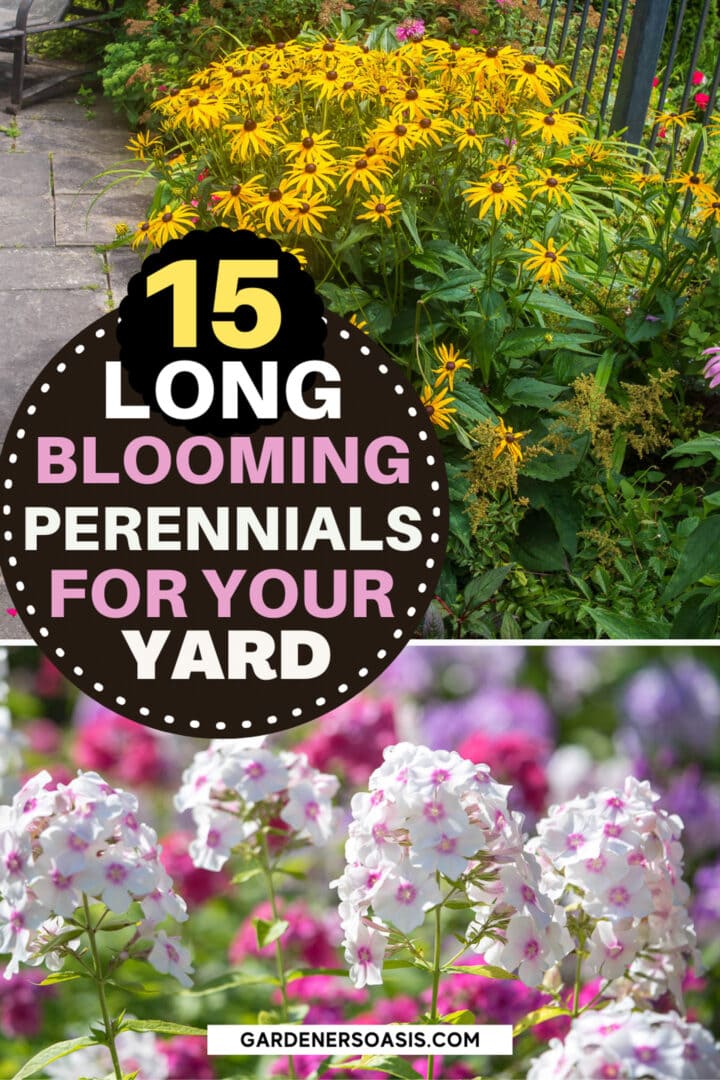
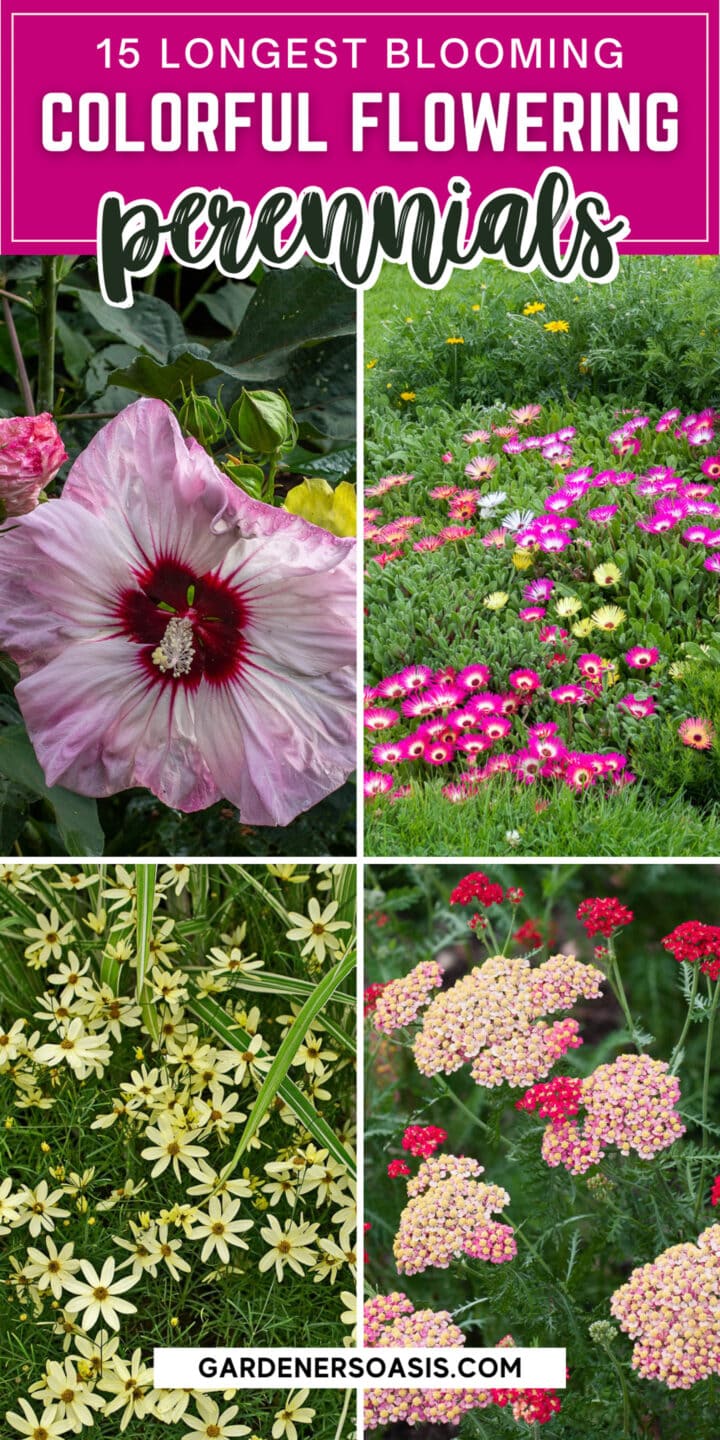
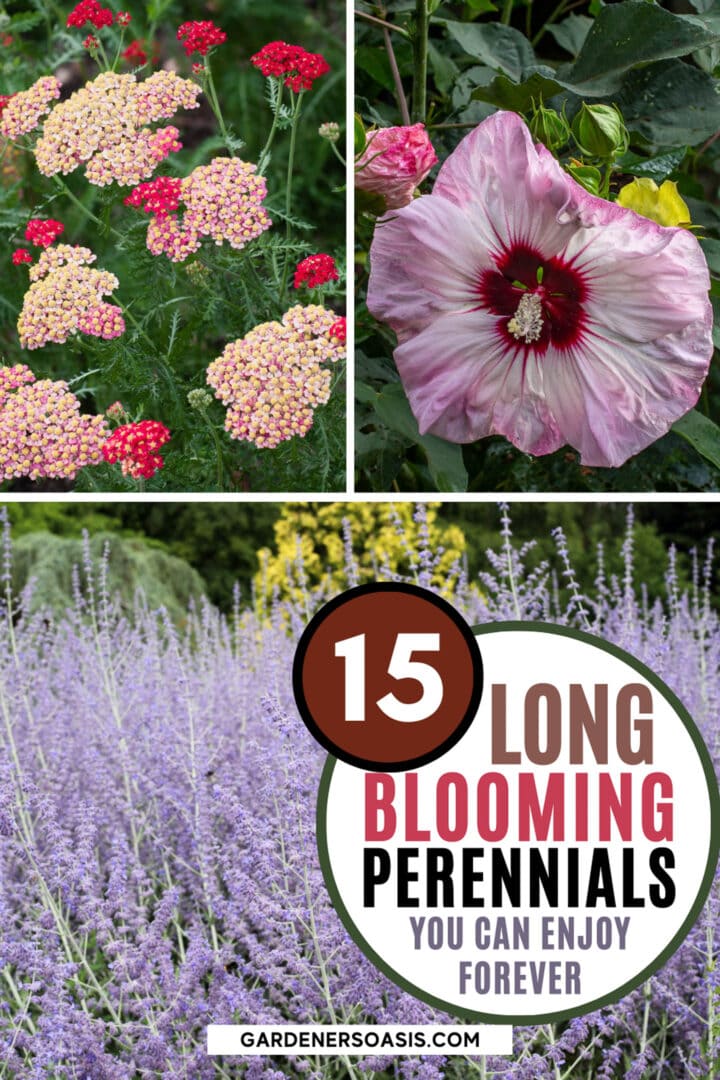
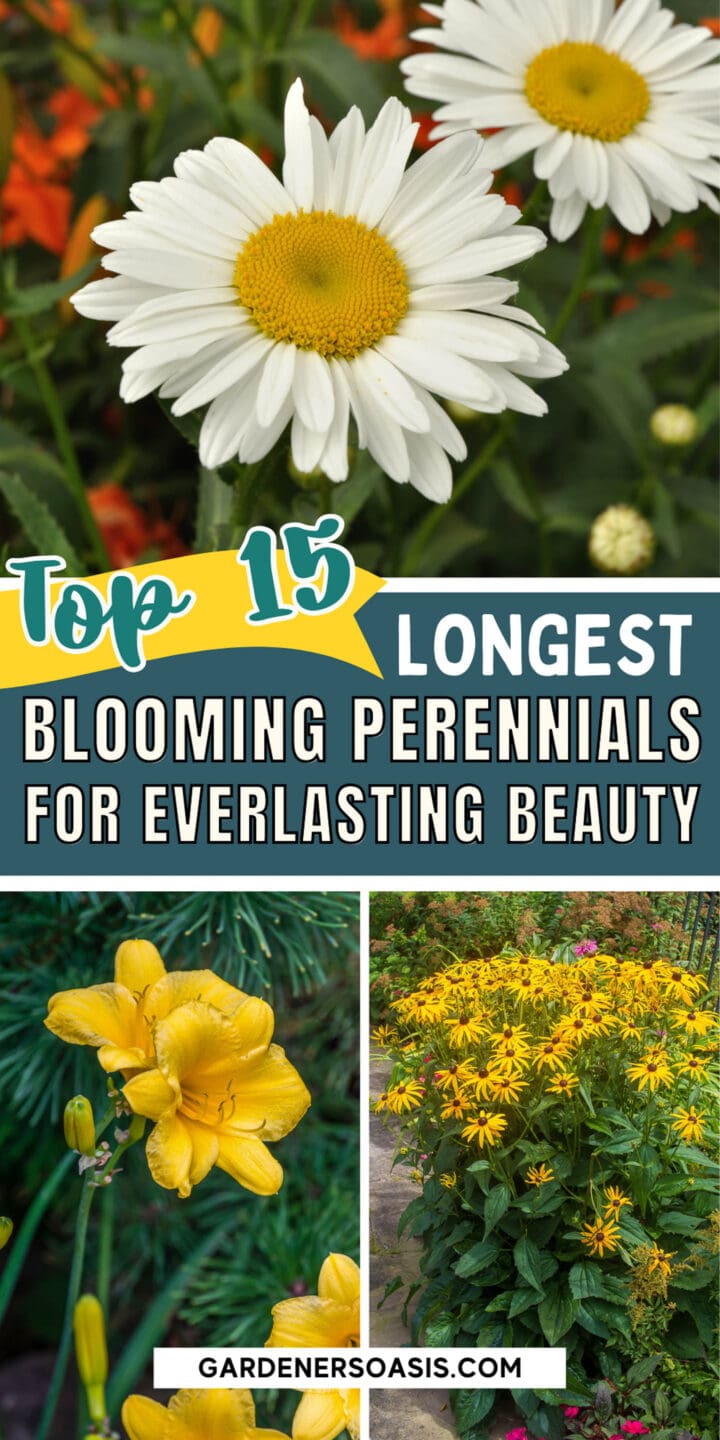
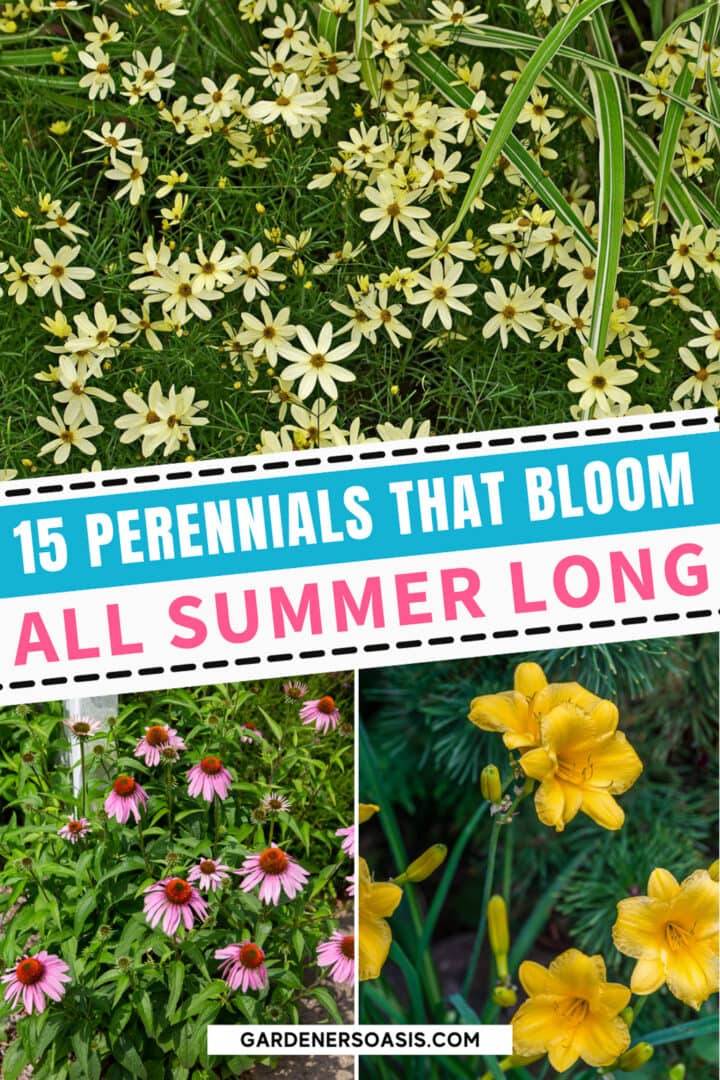
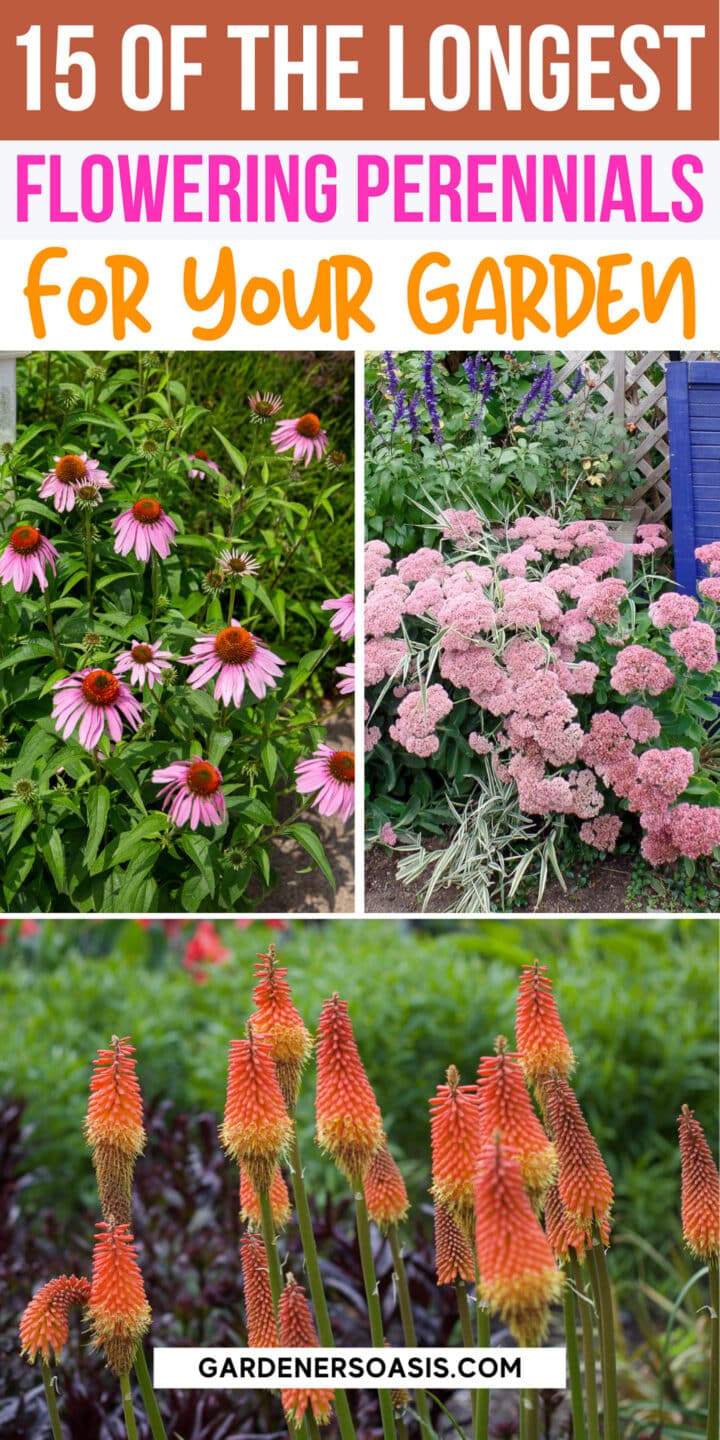
I love all of your posts!! They are so very helpful and beautiful to read and look at. You have helped me refine my garden and encourage me to plant things that are a bit different. My garden is my thearpy and you bring joy to me by sharing all of your knowledge!!
Thanks, Bev! You just made my day. I’m so happy you find what I’m sharing helpful 🙂
I planted Stella d’oro years ago. They have never bloomed for me. What can I do? I’m contemplating digging them out and putting something that will bloom.
Any thoughts on what I’ve done wrong with these beauties?
Hi Valarie…they might be planted too deep. I usually plant them a little higher than the original soil level and mound up the soil around them. They seem to grow down to the level that they like.